

Types Of Water Transport
There are mainly three modes of transportation: airways, waterways and land routes. While land transportation includes everything from cars to buses, trucks to scooters, and bikes to railways, air transportation is mainly comprised of planes and choppers.
Speaking of water transportation, the only picture that emerges in the minds of most of us, especially those of us hailing from outside this industry, is that of a large ship, mostly resembling The Titanic, with large funnels bellowing out wafts of blackish smoke, and gently treading somewhere in the middle of the deep blue waters. For those of us from within the boundaries of this field, the picture is much more detailed, with varied characteristics of various types of watercraft.
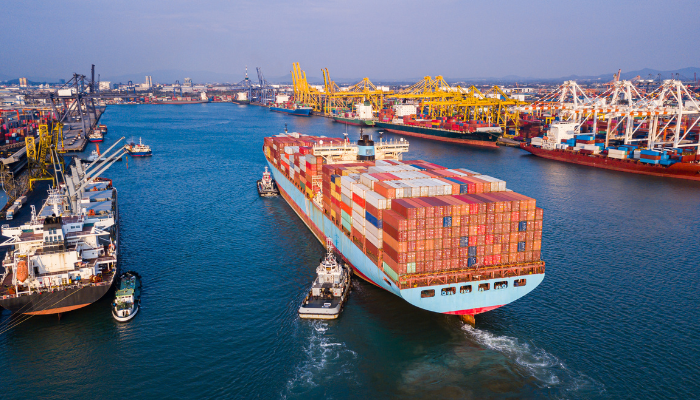
Now, regarding water transport, there can be various classifications other than the types of vessels or watercraft. Let us look at a few of them.
Types of Water Transport Based on routes or types of waterways catering to the traffic
Based on the waterways, water bodies, and routes catering to maritime or waterborne traffic, water or marine transport can be declassified into the following types:
River: This is a local form of water transport that is responsible for transport in a river. Rivers, as we know, are shallow freshwater bodies within a country that may span varying lengths. Riverine transportation further comes under the purview of inland waterways. This means that the channels or bodies catering to the given traffic are limited only to shallow water bodies under local consideration.
Mostly inland water transportation is only meant for short-distance travel from one place to another. So likewise, river transport includes small to medium-sized vessels for both commercial and public as well as personal transportation across varying distances within the geographical limits of a country or state.
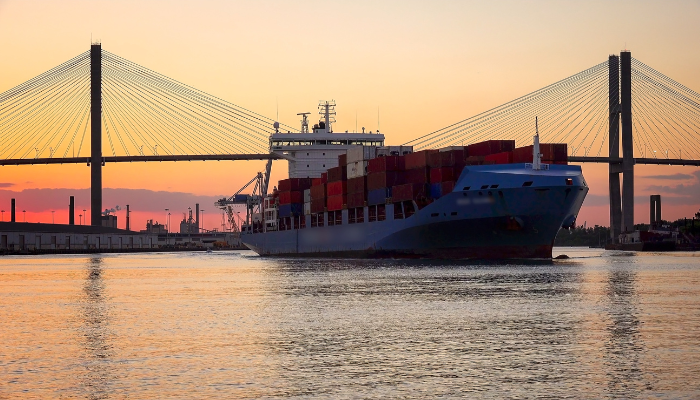
They may include a simple and austere fisherman’s boat lazily basking in the mellow sunlight of dusk to a medium-sized cargo vessel transporting food stock or industrial goods across distances of maybe 1000 or 2000 kilometres from one tip of a country to another.
Modes of river transport include conventional goods or cargo carriers, fishing vessels, barges, speedcrafts, steamers, trawlers, dinghies, pleasure yachts, high-speed planing boats, river ferries, and so on. Because of the limited or restricted depths of the waterbody, all river vessels are classified as shallow draft vessels .
Lakes: In a technical sense, lakes are enclosed or bounded bodies of water with varying surface areas. This means they can range from the size of Bhopal Lake in India to the size of Lake Superior in the United States, which is the single largest freshwater lake in the world! Not only the areas but also the depths vary accordingly. So, the modes of transport and the type of traffic also depend on the extent and size of the lake. However, for all practical purposes, this is also considered under the study of inland waterways where there is a low draft.
Coastal: This comes under the purview of deep-water transportation. The coastal mode of transportation encompasses vessels that tread close to the shoreline. They include both commercials as well as passenger vessels .
For example, there are two ports of call, A and B, along a particular coastline at a separation of 2000 kilometres. A typical coastal vessel travels from A to B and back during a short span of a voyage, say in a period of 4 to 5 days. Fishing trawlers, coastal coal carriers, and tankers that transport coal and petroleum products within two locations in the same country are good examples of commercial coastal vessels.
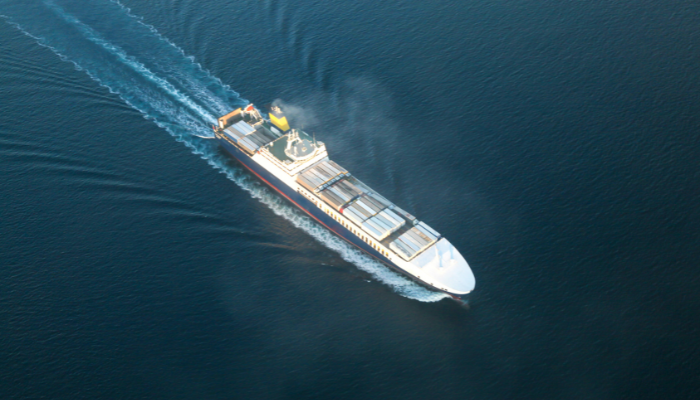
Similarly, ferries carrying holiday-seekers from the port of a city to some famous beach destination some hundred or thousand kilometres away on a charter basis are examples of passenger vessels under the coastal classification.
Coastal vessels have different regulations for design and construction under classification guidelines. They adhere to their routes up a certain distance from the coastline and are not regulated to go into deep seas.
Since they are designed to sail only up to the extent of distance, they are said to have a much lower range than deep-sea vessels. In terms of their structural design, they are stronger and have higher levels of endurance than shallow-draft vessels but much lesser than their deep-water counterparts. Such vessels are also used for shorter distances, like a coastal region to a nearby island, which may be a popular tourist hotspot.
International and Intercontinental : Most maritime traffic is deemed for international or intercontinental travel. While international travel may be between two countries within the same continental boundary, for example, Germany and Sweden or Italy and Greece, intercontinental travel spans across large oceans, separating two continents.
Most of the marine maritime traffic is in the Atlantic and Pacific, the world’s two biggest oceans. Vessels designed for intercontinental travel are structurally in the highest levels of superiority and have very high degrees of endurance. Due to the global monopoly of aviation for the last several decades, most intercontinental maritime traffic comprises commercial vessels, mostly bulkers, tankers, and containerships, along with defence and research vessels .
Polar Vessels: They come under a particular type of vessel classification. Polar vessels are designed and constructed to ply in icy waters containing ice sheets, floes, bergs, or slabs. Since they often need to overcome the forces and the higher degree of hydrodynamic forces from the ice, they are structurally strengthened to a very high level and have arrangements to survive in adversely cold weather conditions for days at a stretch. Icebreakers are in the top category of polar vessels as they are designed to break through greater thicknesses of ice and often clear the path for an entailing ship to follow.
Types of Water Transport Based on ownership and utility
Most of the vessels are categorized based on their ownership or utilization per the following categories:
Commercial: These vessels comprise the highest share of maritime traffic. All inland or deep-sea vessels dedicated to trade, commerce, and industrial purposes are termed commercial vessels. Commercial vessels can be anything from an oil barge to a bulk carrier, a fishing trawler to a containership, and a rice carrier to an LPG carrier. All commercial vessels comprise vital and indispensable links in the global trade and supply chain at multifarious levels. Commercial vessels are either private or government-owned.
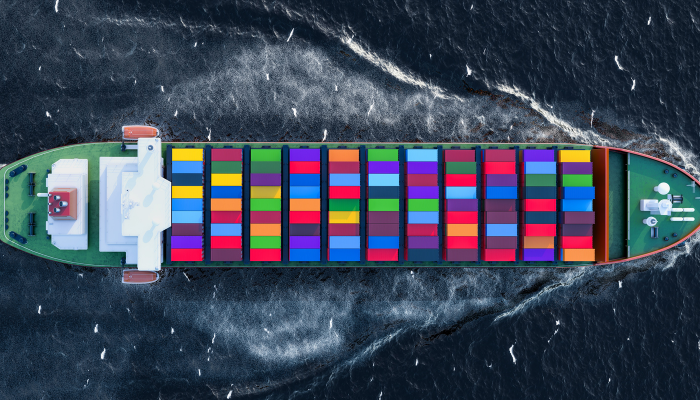
Passenger and public vessels: They comprise vessels dedicated to passenger travel as a mode of waterborne public transportation. As mentioned earlier, the utility of ships for passenger travel has deprecated considerably over time after the monopoly of aviation for the last many years. However, for pleasure and luxury recreation purposes, they are used at many places for holiday-seekers and travellers. Shallow water vessels for public transport are still very popular worldwide in water taxis, river cruises, ferries, steamers, launches, and so on, especially for short-distance travel.
Private Vessels: These small to medium-sized, sometimes bigger, vessels are liable to private ownership only. Ownership may be limited to a single person or a body like an organization or concern. However, as mentioned above, private vessels may not be confused with commercial vessels under private ownership. Commercial vessels are usually bigger (though smaller ships are very much there), which pertains to a more extensive fleet of a shipping or international fleet transport organization solely dedicated to cargo transport and supply chain. They operate round the clock across varying distances for the transport or carriage of a wide range of cargo or supplies in various quantities.
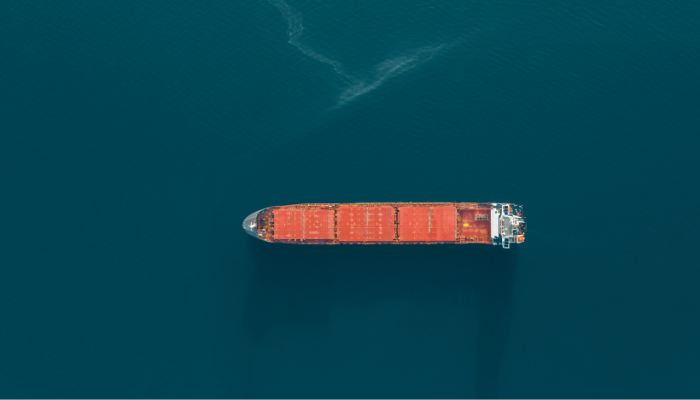
A containership owned, managed, and operated by Maersk or an oil tanker belonging to Scorpio or Euronav Tankers are examples of mainstream commercial vessels under private or corporate ownership.
But a medium-sized survey vessel owned and operated by a coastal engineering organization or a couple of small or medium fishing trawlers run by a significant seafood processing chain are examples of privately-owned ships. Vessels owned by an individual are primarily for pleasure and recreation for the affluent class. Yachts are classic examples of them.
Defence: These vessels, too, are exceptionally prominent among the global fleet, especially for superpowers. However, irrespective of the size, population, and so-called global dominance, every country has its dedicated naval fleet as a part of its military capabilities.
Defence vessels may range from warships, carriers, frigates, destroyers, and corvettes to small patrol vessels for the Coast Guard or high-speed rescue boats used by the Navy. Submarines are a crucial part of several nations’ naval fleets.
Special Purpose Vessels: These vessels are mainly research or exploration vessels used for scientific purposes. They may be government-owned or operated by institutions or bodies.
Types of Water Transport Based on Submersibility
Last but not least, water transport can be based on submergibility:
Surface Vessels: All forms of ships and boats which stay afloat in water are surface vessels. They may be further divided into the following types: displacement, planing, and semi-planing.
Submarines and submersibles: As we already know, these vessels remain submerged below a certain height for a diverse read on submarines and submersibles.
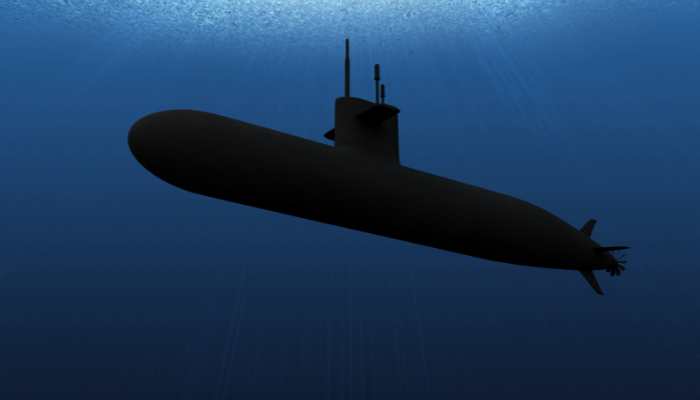
You might also like to read-
- 8 Major Types of Cargo Transported Through the Shipping Industry
- Life on the water: 11 Floating Villages across the World
- IMO: Preparation Is The Key In Ballast Water Management
- Different Technologies For Ballast Water Treatment
- What are Deep Water Ports?
Do you have info to share with us ? Suggest a correction

About Author
Subhodeep is a Naval Architecture and Ocean Engineering graduate. Interested in the intricacies of marine structures and goal-based design aspects, he is dedicated to sharing and propagation of common technical knowledge within this sector, which, at this very moment, requires a turnabout to flourish back to its old glory.
Latest Marine Navigation Articles You Would Like :
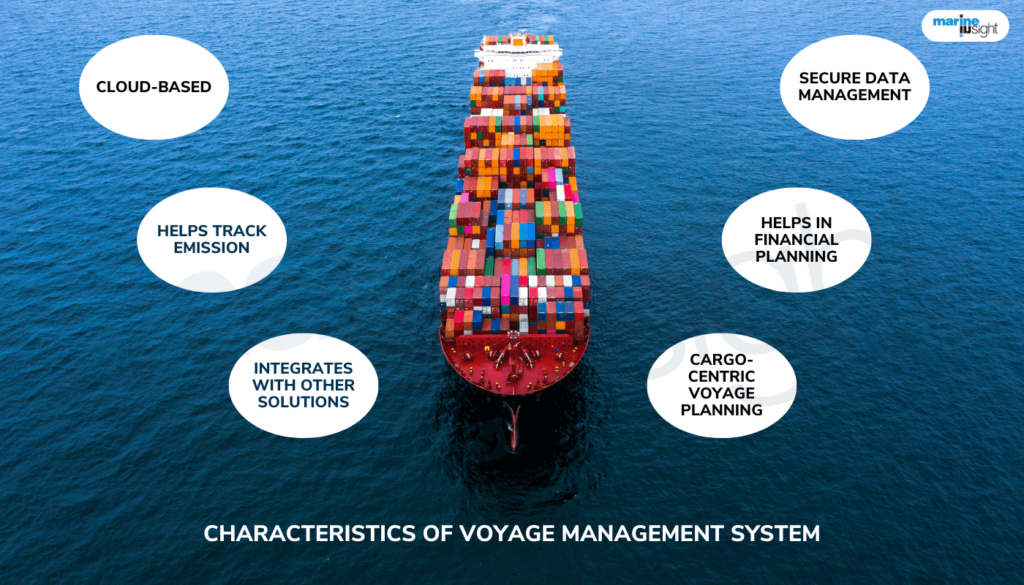
What is Voyage Management System?
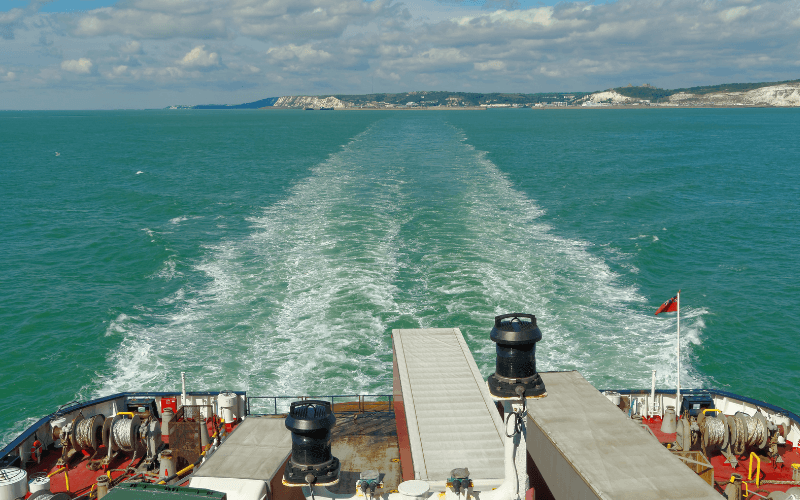
The Strait Of Dover – The Busiest Shipping Route In The World
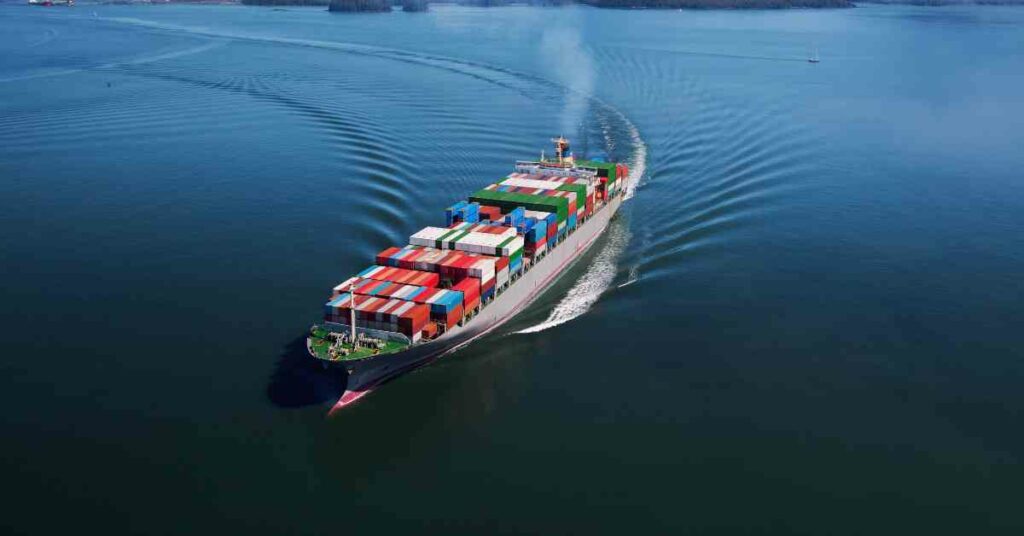
What is Transverse Thrust in Ships?
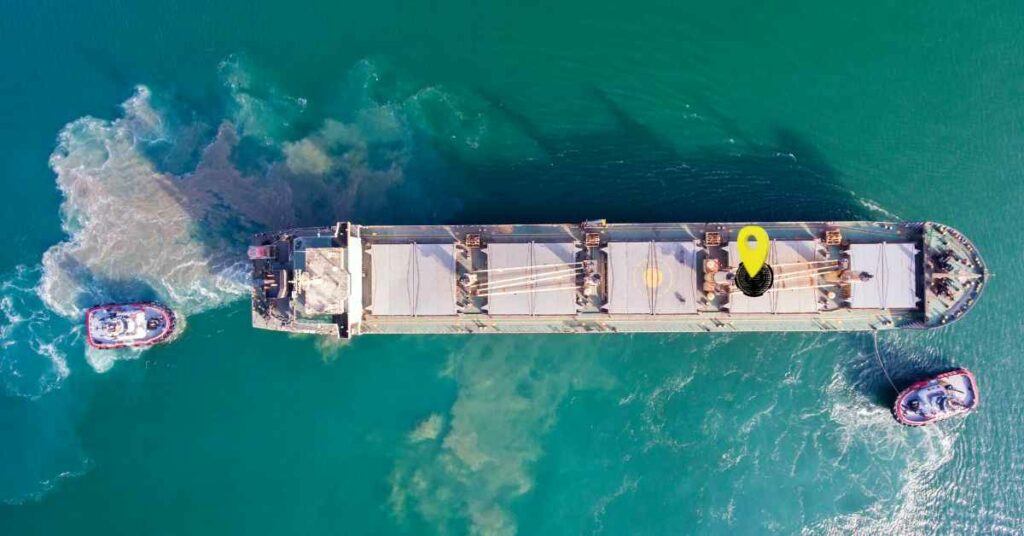
What Is The Pivot Point Of A Vessel?
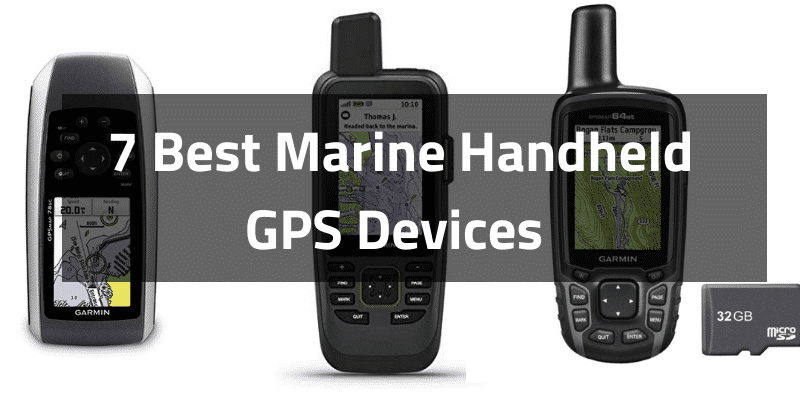
7 Best Handheld Marine GPS in 2024
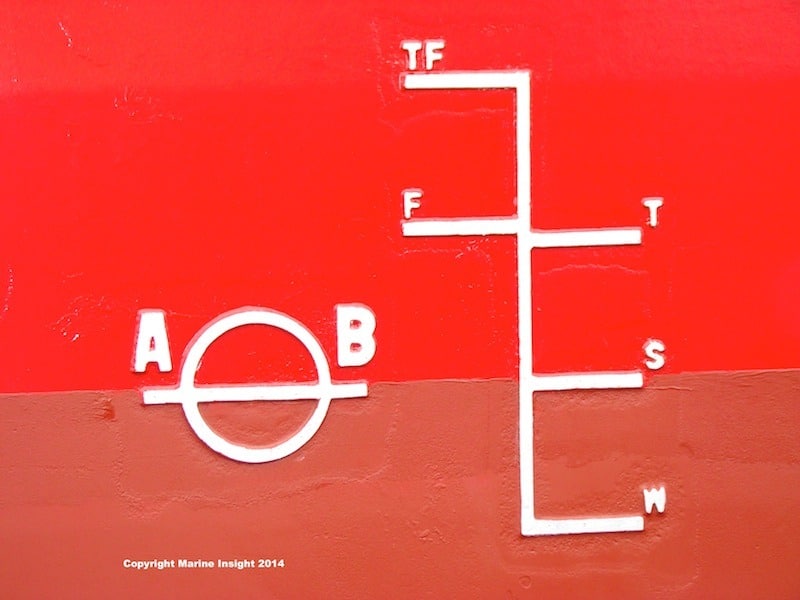
Introduction To Ship Load Lines

Subscribe To Our Newsletters
By subscribing, you agree to our Privacy Policy and may receive occasional deal communications; you can unsubscribe anytime.
Leave a Reply
Your email address will not be published. Required fields are marked *
Subscribe to Marine Insight Daily Newsletter
" * " indicates required fields
Marine Engineering
Marine Engine Air Compressor Marine Boiler Oily Water Separator Marine Electrical Ship Generator Ship Stabilizer
Nautical Science
Mooring Bridge Watchkeeping Ship Manoeuvring Nautical Charts Anchoring Nautical Equipment Shipboard Guidelines
Explore
Free Maritime eBooks Premium Maritime eBooks Marine Safety Financial Planning Marine Careers Maritime Law Ship Dry Dock
Shipping News Maritime Reports Videos Maritime Piracy Offshore Safety Of Life At Sea (SOLAS) MARPOL

The Fascinating History of Water Transport
Disclaimer: Some posts on Tourism Teacher may contain affiliate links. If you appreciate this content, you can show your support by making a purchase through these links or by buying me a coffee . Thank you for your support!
The history of water transport is a long and fascinating one, and in this article I will teach you all about it! From cruise ships to cargo transport to water buses, there are many types of water transport that have played a key role in the fascinating history of water transport. Ready to learn more? Keep scrolling…
What is water transport?
Early history, the history of water transport in the viking era, the arab age of discovery, the history of water transport continued, the two world wars, individual crossings of the atlantic ocean, the history of water transport.
Before we delve into the history of water transport we first need to understand what water transport is!
Water transport, or maritime transport, refers to the use of vessels or vehicles to transport people or goods via water – whether that be a sea, ocean, lake, river, canal or other body of water. It has a long history and is still used today on a daily basis for recreational, military and trade purposes.

Looking at the very early history of water transport involves looking at when the first boat was invented. Records suggest that boats have been in use for a long time. The oldest recovered boat is the Pesse canoe, found in the Netherlands, which was made from hollowing out a tree trunk somewhere between 8200 and 7600 BC. Presumably this was used to transport something, so it can be said that this was the very start of the history of water transport.
We know that the Ancient Egyptians were using wooden boats called Feluccas from around 3000 BC, to transport coffins, grains and much more. Prior to this, however, they were using boats made from bundles of papyrus reeds, tied together really tightly.
By around 1000 AD, the Austronesian people in the island regions of Southeast Asia were engaging in maritime trade with citizens of China , the Middle East and South Asia. They are said to be the ones to introduce sailing technology and techniques to these areas. Records suggest that they used boats known as ‘kunlun bo’ which translates to ‘ship of the Kunlun people’, with 4-7 masts and the ability to sail against the wind thanks to tanja sails.
We know that the Vikings were keen on boats and used them as their primary form of transport – making them a key figure in the history of water transport. Their history can be traced back to around 793 AD.
Fjord Tours say Some of the earliest ships discovered were the Oseberg, the Gokstad, and the Tune. These ships were not as specialized as the ships that would be created after them. So, it appears that they were used for everything from transport to battle.
By the end of the 9th century, specialization of the ships had begun. Around this time, the Vikings started to create warships. Warships were longer and slimmer than previous boats the Vikings had built, and although the name might inspire visions of epic sea battles, the warships were actually used for something altogether different. Due to their shape and size, these vessels were able to navigate sheltered waters where they would drop off the Vikings at a point of interest. From there, the Vikings could discreetly enter their target location. The warships were designed for a quick getaway once the Vikings had obtained the loot from their target location.

At the same time as the Viking era, the Arab Empire was expanding their trade network across Asia, Europe and Africa. During the 8th-12th centuries they were the world’s leading economic power, it has been said. Many rivers in the Islamic region were unnavigable. Due to this, transport by sea was very important; using a compass and a kamal, sailors during this period could sail across oceans rather than just along the coast – cutting the time it took to get from A to B. Sea trade allowed for the distribution of food and supplies to feed entire nations of people in the Middle East. And long-distance sea trade meant the importation of raw materials for building and luxury goods for wealthy citizens. They used ships called a qarib, which would go on to inspire the Spanish caravel.
From the 14-1500s, water transport was key in what is known as the general Age of Discovery. This was Christopher Columbus’ era, when European ships sailed across the world searching for new trading routes. Other big names in maritime history around this time include John Cabot, Juan Fernandez, Jacques Cartier, Richard Hakluyt and Vasco da Gama. Around this time, the favoured type of boat was a wooden sailing vessel with 3-4 masts. It wasn’t just these explorers who used them but traders and the military.
We can, from here, start to see a much more heavily documented timeline of boats, ships and other forms of water transport. For example, also in the 1400s was the invention of the yacht – by the Dutch, who used these for chasing pirates and criminals as well as for Naval purposes. They were then co-opted by rich ship owners, who would use them for celebratory sail-outs when their ships came back – hence why they are now a symbol of the elite. In 1660, Charles II used a yacht to carry him to the Netherlands from England for his restoration.
Because of the growth in trade routes, boats and ships around this time were being constantly developed and improved. They needed to be bigger and stronger, and able to travel for longer periods of time.
Fast sailing ships called Clippers were built in the 1800s, and they had long slim hulls and tall masts. A few years later, in 1818, the Black Ball Line shipping company started offering a passenger service from the United States over to England. The group was founded by Quakers who had four packet ships, and the transatlantic passenger crossing ran between New York City and Liverpool. It wasn’t particularly popular at first but by 1822 they were running two crossings per month for 35 guineas per person; this led to competition from the likes of Red Star Line.
At the same time, the first steam powered ships were able to cross the Atlantic Ocean too. Innovations in the history of water transport were coming thick and fast in the 1800s; by around 1845, the first ocean liners built from iron appeared. They were propeller-driven, instead of using sails.
It was, however, also around this time that canals became less of a popular way to transport goods and people – this was thanks to the establishment of good working railways.

Again, innovations continued. Diesel became an easy way to power ships – oil seemed to work better than steam. However, steam was still in use for some time alongside the new diesel-powered ships; it was in 1912 when the famous tragedy of the Titanic took place.
We also saw a lot of new water transport inventions in the 1900s: hydroplanes, hovercrafts, and nuclear-powered cargo ships like the N.S. Savannah which sailed for 3.5 years without having to refuel. The 1900s – or, more specifically, the 1980s – also saw the introduction of container ships. These large and strong cargo ships allowed vast amounts of cargo to be carried in mental boxes known as containers; around 90% of non-bulk cargo is carried on container ships today.
Cruise ships also rose to prominence in the 1900s. The first ever cruise ship was created in 1901; it was German and you can read about it here . However, it wasn’t until the 1990s that cruising became more commonplace and more accessible. They were able to carry hundreds if not thousands of people – like floating holiday villages. Over time they have become more and more impressive with their own cinemas, water parks and go-karting tracks alongside the multitude of bars and restaurants each one has on board.
Boats and ships obviously played a huge part in both of the world wars, which were two important time periods in the history of water transport. Thousands of water transport vessels were used in each war – for battle, for transporting goods to armed forces in different places and so on. During WWI, around 2100 ships were sunk and 153 U-boats were destroyed. And during WWII, around 3,700 ships were sunk a further 783 U-boats destroyed.
Ann Davison was the first woman to sail across the Atlantic alone, doing so in 1952. More did so in the 1960s and then, in 1965, Robert Manry made it across without stopping in a sailboat named Tinkerbelle. Later, in 1980, Gérard d’Aboville rowed single-handedly across the Atlantic Ocean – this feat was accomplished by a woman eleven years later, when Tori Murden did it.
There is a lot to say about the history of water transport – from the first rudimentary boats to the super cruise ships of today. Water vehicles have long been used to transport goods and people across bodies of water, and while air and rail transport are popular now it seems that water transport remains a brilliant way to get from A to B.
Liked this article? Click to share!
ENCYCLOPEDIC ENTRY
Water cycle.
The water cycle is the endless process that connects all of the water on Earth.
Conservation, Earth Science, Meteorology
Deer Streams National Park Mist
A misty cloud rises over Deer Streams National Park. The water cycle contains more steps than just rain and evaporation, fog and mist are other ways for water to be returned to the ground.
Photograph by Redline96
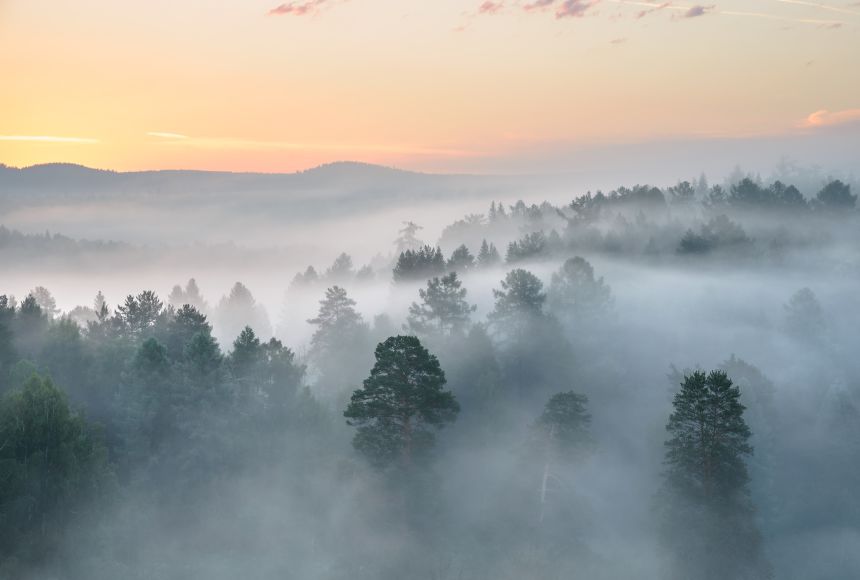
Water is one of the key ingredients to life on Earth. About 75 percent of our planet is covered by water or ice. The water cycle is the endless process that connects all of that water. It joins Earth’s oceans, land, and atmosphere.
Earth’s water cycle began about 3.8 billion years ago when rain fell on a cooling Earth, forming the oceans. The rain came from water vapor that escaped the magma in Earth’s molten core into the atmosphere. Energy from the sun helped power the water cycle and Earth’s gravity kept water in the atmosphere from leaving the planet.
The oceans hold about 97 percent of the water on Earth. About 1.7 percent of Earth’s water is stored in polar ice caps and glaciers. Rivers, lakes, and soil hold approximately 1.7 percent. A tiny fraction—just 0.001 percent—exists in Earth’s atmosphere as water vapor.
When molecules of water vapor return to liquid or solid form, they create cloud droplets that can fall back to Earth as rain or snow—a process called condensation . Most precipitation lands in the oceans. Precipitation that falls onto land flows into rivers, streams, and lakes. Some of it seeps into the soil where it is held underground as groundwater.
When warmed by the sun, water on the surface of oceans and freshwater bodies evaporates, forming a vapor. Water vapor rises into the atmosphere, where it condenses, forming clouds. It then falls back to the ground as precipitation. Moisture can also enter the atmosphere directly from ice or snow. In a process called sublimation , solid water, such as ice or snow, can transform directly into water vapor without first becoming a liquid.
Media Credits
The audio, illustrations, photos, and videos are credited beneath the media asset, except for promotional images, which generally link to another page that contains the media credit. The Rights Holder for media is the person or group credited.
Production Managers
Program specialists, specialist, content production, last updated.
April 29, 2024
User Permissions
For information on user permissions, please read our Terms of Service. If you have questions about how to cite anything on our website in your project or classroom presentation, please contact your teacher. They will best know the preferred format. When you reach out to them, you will need the page title, URL, and the date you accessed the resource.
If a media asset is downloadable, a download button appears in the corner of the media viewer. If no button appears, you cannot download or save the media.
Text on this page is printable and can be used according to our Terms of Service .
Interactives
Any interactives on this page can only be played while you are visiting our website. You cannot download interactives.
Related Resources
Water Transport and Tourism
- First Online: 01 January 2023
Cite this chapter

- M. R. Dileep 10 &
- Francesca Pagliara ORCID: orcid.org/0000-0001-6332-6313 11
Part of the book series: Advances in Spatial Science ((ADVSPATIAL))
432 Accesses
1 Citations
Waterborne transport, which refers to the transportation of people or cargo via waterways, is a significant component of tourism. Water tourism represents the use of different types of sailing equipment and appliances for transportation and recreation purposes by visitors. Whether used to transport cargo or passengers, water transport is vital to the successful operations of tourism in many destinations. Water transport is one of the oldest types of transport and has been widely used throughout history.
This is a preview of subscription content, log in via an institution to check access.
Access this chapter
- Available as PDF
- Read on any device
- Instant download
- Own it forever
- Available as EPUB and PDF
- Compact, lightweight edition
- Dispatched in 3 to 5 business days
- Free shipping worldwide - see info
- Durable hardcover edition
Tax calculation will be finalised at checkout
Purchases are for personal use only
Institutional subscriptions
Arlt, W.G., & Feng, G. (2009). The Yangzi River tourism zone. In B. Prideaux & M. Cooper (Eds.), River tourism . Oxfordshire: CABI, pp. 117–130.
Chapter Google Scholar
Armstrong, J., & Williams, M.D. (2005). The steamboat and popular tourism. The Journal of Transport History , 26(1), 61–77. https://doi.org/10.7227/TJTH.26.1.4
Article Google Scholar
Baird, A.J. (2009). A comparative study of the ferry industry in Japan and the UK. Transport Reviews , 19(1). https://doi.org/10.1080/014416499295664
Barron, P., & Greenwood, A.B. (2006). Issues determining the development of cruise itineraries: A focus on the luxury market. Tourism in Marine Environments , 3(2), 89–99. https://doi.org/10.3727/154427306779435238
Berger, A.A. (2004). Ocean travel and cruising: A cultural analysis. New York, NY: Haworth Hospitality Press.
Google Scholar
Bosnic, I., & Gasic, I. (2019, July 15–16). River cruise industry: Trends and challenges, economic and social development—Book of Proceedings . Varazdin.
Bowen, C., Fidgeon, P., & Page, S. J. (2014). Maritime tourism and terrorism: Customer perceptions of the potential terrorist threat to cruise shipping. Current Issues in Tourism , 17(7), 610–639.
Bowles, B.O.L., Kaaristo, M., & Rogelja Caf, N. (2019). Dwelling on and with water—Materialities, (im)mobilities and meanings: Introduction to the special issue. Anthropological Notebooks , 25(2), 5–12.
Brida, G.J., & Zapata, S. (2010). Economic impacts of cruise tourism: The case of Costa Rica. Anatolia: An International Journal of Tourism and Hospitality Research , 21(2), 322–338. https://doi.org/10.1080/13032917.2010.9687106
Brida, J.G., & Risso, W.A. (2010). Cruise passengers expenditure analysis and probability of repeat visits to Costa Rica: A cross section data analysis. Tourism Anal , 15, 425–434.
Calstockferry.co.uk, retrieved from http://www.calstockferry.co.uk/different-types-ferries/
Central Commission for the Navigation of the Rhine. (2019). Inland navigation in Europe: Market trends, retrieved from https://inland-navigation-market.org/wp-content/uploads/2019/11/ccnr_2019_Q2_en-min2.pdf.pdf
CLIA. (2006). 2006 cruise market profile, Cruise Line International Association, retrieved from http://www.bitaz.com.mx/docs/200620Market20Profile20Study.pdf
CLIA. (2020). 2020 global market report, retrieved from https://cruising.org/-/media/research-updates/research/2019-year-end/updated/2019-global-market-report.ashx
CLIA. (2022). Retrieved from https://cruising.org/-/media/clia-media/research/2022/clia-state-of-the-cruise-industry-2022_updated.ashx
CNN Travel. (2018). Retrieved from https://edition.cnn.com/travel/article/worlds-biggest-cruise-ships/index.html
Cooper, D., Holmes, K., Pforr, C., & Shanka, T. (2018). Implications of generational change: European river cruises and the emerging gen X market. Journal of Vacation Marketing , 25(4), 418–431.
Cooper, M. (2009). River tourism-sailing the Nile. In B. Prideaux & M. Cooper (Eds.), River Tourism . Oxfordshire: CABI, pp. 74–94.
Cruise Lines International Association. (2005). CLIA Cruise Lines ride the wave of unprecedented growth . New York: Cruise Lines International Association.
Dickinson, J., & Lumsdon, L. (2010). Slow travel and tourism . London: Routledge.
Dileep, M.R. (2019). Tourism, transport and travel management. London: Routledge.
Book Google Scholar
Dwyer, A., & Forsyth. P. (1998). Economic significance of cruise tourism. Annals of Tourism Research , 25(2), 393–415.
Ely, C. (2003). The origins of Russian scenery: Volga River tourism and Russian landscape aesthetics. Slavic Review , 62(4), 666–682.
Erfurt-Cooper, P. (2009). European Water ways as a source of leisure and recreation. In B. Prideaux & M. Cooper (Eds.), River tourism . Oxfordshire: CABI, pp. 95–116.
EspinetRius, J.M., Gassiot Melian, A., & Torrent, R.R. (2022). World ranking of cruise homeports from a customer pricing perspective. Research in Transportation Business & Management . https://doi.org/10.1016/j.rtbm.2022.100796
Fallon, J. (2012). ‘If you’re making waves then you have to slow down’: Slow tourism and canals. In S. Fullagar, K. Markwell, & E. Wilson (Eds.), Slow tourism: Experiences and mobilities . Bristol: Channel View Publications, pp. 143–154
Gibbs, L. M. (2013). Bottles, bores, and boats: Agency of water assemblages in post/colonial inland Australia. Environment & Planning A , 45(2), 467–484.
Gibson, P. (2006). A study of impacts–Cruise tourism and the South West of England. Journal of Travel & Tourism Marketing , 20(3/4). https://doi.org/10.1300/J073v20n03_05
Guedes, A., & Rebelo, J. (2021). River cruise holiday packages: A network analysis combined with a geographic information system framework. Tourism Management Perspectives , 37, 100779. https://doi.org/10.1016/j.tmp.2020.100779
Gui, L., & Russo, A.P. (2011). Cruise ports: A strategic nexus between regions and global lines—Evidence from the Mediterranean. Maritime Policy and Management , 38(2), 129–150.
Hall, J. A., & Braithwaite, R. (1990). Caribbean cruise tourism: a business of transnational partnerships. Tourism Management ‚ 11‚ 339–347.
Hritz, N., & Cecil, A.K. (2008). Investigating the sustainability of cruise tourism: A case study of Key West. Journal of Sustainable Tourism , 16(2), 168–181. https://doi.org/10.2167/jost716.0
Hung, K., & Petrick, F.J. (2011). Why do you cruise? Exploring the motivations for taking cruise holidays, and the construction of a cruising motivation scale. Tourism Management , 32(2), 386–393. https://doi.org/10.1016/j.tourman.2010.03.008
Irena, B., & Ivana, G. (2019, July 15–16). River Cruise industry: Trends and challenges. Paper presented in 43rd International Scientific Conference on Economic and Social Development—“Rethinking Management in the Digital Era: Challenges from Industry 4.0 to Retail Management”. Aveiro.
Jaakson, R. (2004). Beyond the tourist bubble? Cruiseship passengers in port. Annals of Tourism Research , 31(1), 44–60.
Johns, N., & Clarke, V. (2001). Mythological analysis of boating tourism. Annals of Tourism Research , 28(2), 334–359.
Jones, R.V. (2011). Motivations to cruise: An itinerary and cruise experience study. Journal of Hospitality and Tourism Management , 18, 30–40. https://doi.org/10.1375/jhtm.18.1.30 .
Kester, G.C.J. (2002). Cruise tourism. Tourism Economics , 9(3), 337–350
Kizielewicz, J. (2013). Themed cruises, as a trend in marine tourism. Scientific Journals , 33, 30–31.
Kizielewicz, J., Haahti, A., Luković, T., & Gračan, D. (2017). The segmentation of the demand for ferry travel—A case study of Stena Line. Economic Research-Ekonomska Istraživanja , 30(1), 1003–1020. https://doi.org/10.1080/1331677X.2017.1314789
Larsen, S., Wolff, K., & Marnburg, E., et al. (2013). Belly full, purse closed: Cruise line passengers’ expenditures. Tourism Management Perspectives , 6, 142–148. https://doi.org/10.1016/j.tmp.2013.02.002 .
Lau, Y-Y., & Yip, T-L. (2020). The Asia cruise tourism industry: Current trend and future outlook. The Asian Journal of Shipping and Logistics , 36, 190–201. https://doi.org/10.1016/j.ajsl.2020.03.003 \
Lee, S. (2013). Does size really matter? An investigation of cruise ship size. Tourism Analysis , 18, 111–114.
Lee, C-F., Chen, P-T.‚ & Huang, H-I. (2014). Attributes of Destination Attractiveness in Taiwanese Bicycle Tourism: The Perspective of Active Experienced Bicycle Tourists. International Journal of Hospitality & Tourism Administration , 15(3), 275–297, https://doi.org/10.1080/15256480.2014.925726 .
Lee, S., & Ramdeen, C. (2013). Cruise ship itineraries and occupancy rates. Tourism Management , 34, 236–237.
Lester, J., & Weeden, C. (2004). Stakeholders, the natural environment and the future of Caribbean cruise tourism. The International Journal of Tourism Research , 6, 39–50.
Lingard, N. (2002). The route less travelled: Fred Olsen Lines keeps it interesting. International Cruise & Ferry Review , 193.
Lohmann, G., & Duval, D.T. (2013). Critical aspects of the tourism-transport relationship. Oxfor-UK: Goodfellow Publishers.
Łosiewicz, Z., & Kaup, M. (2014). Analiza innowacyjnych rozwiązań napędów stosowanych na jednostkach śródlądowych w apsekcie zrównoważonego rozwoju transportu. Logistyka , 6, 6849–6856.
Lumsdon, L., & Page, S. (2004). Progress in transport and tourism research: Reformulating the transport -tourism interface and future research agendas. In L. Lumsdon & S. Page (Eds.), Tourism and transport: Issues and agenda for the new millennium . New York: Routledge, pp. 1–28
McGrath, E., Harmer, N., & Yarwood, R. (2020). Ferries as travelling landscapes: Tourism and watery mobilities. International Journal of Culture Tourism and Hospitality Research , 14(3), 321–334. https://doi.org/10.1108/IJCTHR-10-2019-0184
Mehran, J., Olya, G.T.H., Han, H., & Kapuscinski, G. (2020). Determinants of canal boat tour participant behaviours: An explanatory mixed-method approach. Journal of Travel & Tourism Marketing , 37(1), 112–127. https://doi.org/10.1080/10548408.2020.1720890
Muszyńska-Jeleszyńska, D. (2018). The use of solar technology on vessels for development of water tourism and recreation—Bydgoszcz Water Tram case study. Paper presented in International Conference of Computational Methods in Sciences and Engineering (ICCMSE 2018), AIP Conference Proceedings 2040, 070011-1–070011-5. https://doi.org/10.1063/1.5079132
Nasir, F.M., & Hanafiah, M.H. (2017). River cruise impact towards local community: An exploratory factor analysis approach. Journal of Tourism , Hospitality & Culinary Arts (JTHCA) , 9(2), 175–188.
Niavis, S., & Vaggelas, G. (2016). An empirical model for assessing the effect of ports’ and hinterlands’ characteristics on homeports’ potential. Maritime Business Review , 1(3), 186–207.
Papathanassis, A. (2017). Cruise tourism management: State of the art. Tourism Review , 72 (1), 104–119. https://doi.org/10.1108/TR-01-2017-0003
Papathanassis, A., & Beckmann, I. (2011). Assessing the ‘poverty of cruise theory’ hypothesis. Annals of Tourism Research , 38(1), 153–174.
Peeters, P., Egmond, T., & Visser, N. (2004). European tourism, transport and environment, Centre for Sustainability, Tourism and Transport, data available online at https://www.cstt.nl/userdata/documents/appendix_deliverable_1_subject_matter_review_30082004.pdf
Petrick, J.F. (2003). Measuring cruise passengers’ perceived value. Tourism Annals , 7, 251–258.
Petrick, J.F., Li, X., & Park, S. Y. (2007). Cruise passengers’ decision-making processes. Journal of Travel & Tourism Marketing , 23(1), 1–14.
Pranic, L., Marusic, Z., & Sever, I. (2013). Cruise passengers’ experiences in coastal destinations e Floating “B&Bs” vs. floating “resorts”: A case of Croatia International micro-cruises are indeed novel and exciting tourism segment. Ocean & Coastal Management , 84, 1–12. https://doi.org/10.1016/j.ocecoaman.2013.07.002
Pratt, S, & Blake, A. (2009). The economic impact of Hawaii’s cruise industry. Tourism Analysis , 14(3), 337–351.
Prideaux, B. (2017). Canals: An old form of transport transformed into a new form of heritage tourism experience. In F. Vallerani & F. Visentin (Eds.), Waterways and the cultural landscape . Abingdon: Routledge, pp. 143–157.
Prideaux, B., Timothy, D. J., & Cooper, M. (2009). Introducing river tourism. In B. Prideaux & M. Cooper (Eds.), River tourism. Oxfordshire: CABI, pp. 1–22.
Rhoden, S., & Kaaristo, M. (2020). Liquidness: Conceptualising water within boating tourism. Annals of Tourism Research , 81. https://doi.org/10.1016/j.annals.2019.102854
Ritter, W., & Schafer, C. (1998). Cruise-Tourism. Tourism Recreation Research , 23(1), 65–71. https://doi.org/10.1080/02508281.1998.11014821
Rodrigue, J.P., Comtois, C., & Slack, B. (2006). The geography of transport systems. Oxon, UK: Routledge.
Rodrigue, J.P., & Notteboom, T. (2013). The geography of cruises: Itineraries, not destinations. Applied Geography , 38, 31–42.
Santos, M., Radicchi, E., & Zagnoli, P. (2019). Port’s role as a determinant of cruise destination socio-economic sustainability. Sustainability , 11, 4542. https://doi.org/10.3390/su11174542
Skrede, O., & Tveteraas, L.S. (2019). Cruise spillovers to hotels and restaurants. Tourism Economics , 25(8). https://doi.org/10.1177/1354816619836334
Steinbach, J. (1995). River related tourism in Europe – an overview. GeoJournal ‚ 35(4), 443–458.
Tang, L., & Jang, S. (2010). The evolution from transportation to tourism: The case of the New York canal system. Tourism Geographies: An International Journal of Tourism Space, Place and Environment , 12(3), 435–459. https://doi.org/10.1080/14616688.2010.494683 .
Thompson Clarke Shipping. (2006). Cruise destinations... A how to guide . Brisbane: Tourism Queensland.
Thurau, B., Seekamp, E., Carver, A.D., & Lee, J.G. (2015). Should cruise ports market ecotourism? A comparative analysis of passenger spending expectations within the Panama Canal watershed. International Journal of Tourism Research , 17(1), 45–53.
Timothy, D.J. (2009). River based tourism in the USA: Tourism and recreation on the Colorado and Mississipi Rivers. In B. Prideaux & M. Cooper (Eds.), River tourism . Oxfordshire: CABI, pp. 41–54.
Tomej, K., & Lund-Durlacher, D. (2020). River cruise characteristics from a destination management perspective. Journal of Outdoor Recreation and Tourism . https://doi.org/10.1016/j.jort.2020.100301
van Balen, M., Dooms, M., & Haezendonck, E. (2014). River tourism development: The case of the port of Brussels. Research in Transportation Business & Management , 13, 71–79.
Vaya´, E., Garcia, J.R., Murillo, J. et al. (2018). Economic impact of cruise activity: The case of Barcelona. Journal of Travel and Tourism Marketing , 35(4), 479–492. https://doi.org/10.1080/10548408.2017.1363683 .
Winter, J., & Kulczyk, J. (2003). Śródlądowy transport wodny. Wrocław: Publishing House of the Wroclaw University of Technology.
Wood, E.R. (2000). Caribbean cruise tourism: Globalization at sea. Annals of Tourism Research , 27(2), 345–370.
Download references
Author information
Authors and affiliations.
Kerala Institute of Tourism and Travel Studies (KITTS), Thiruvananthapuram, Kerala, India
M. R. Dileep
Department of Civil, Architectural and Environmental Engineering, University of Naples Federico II, Naples, Italy
Francesca Pagliara
You can also search for this author in PubMed Google Scholar
Corresponding author
Correspondence to M. R. Dileep .
Rights and permissions
Reprints and permissions
Copyright information
© 2023 The Author(s), under exclusive license to Springer Nature Switzerland AG
About this chapter
Dileep, M.R., Pagliara, F. (2023). Water Transport and Tourism. In: Transportation Systems for Tourism. Advances in Spatial Science. Springer, Cham. https://doi.org/10.1007/978-3-031-22127-9_11
Download citation
DOI : https://doi.org/10.1007/978-3-031-22127-9_11
Published : 01 January 2023
Publisher Name : Springer, Cham
Print ISBN : 978-3-031-22126-2
Online ISBN : 978-3-031-22127-9
eBook Packages : Economics and Finance Economics and Finance (R0)
Share this chapter
Anyone you share the following link with will be able to read this content:
Sorry, a shareable link is not currently available for this article.
Provided by the Springer Nature SharedIt content-sharing initiative
- Publish with us
Policies and ethics
- Find a journal
- Track your research
- Elephango for Families
- Elephango for Schools
- Standards Search
- Family Sign-Up
Transportation: Water
Contributor: Samantha Penna. Lesson ID: 11670
Fish don't have feet, so they can't walk on land. You don't have fins, so you can't swim across the ocean! But there are many ways to travel over (and under!) water. Now watch them, then build a boat!
People and Their Environment
Lesson plan - get it.
- How do ducks and fish travel in water?
- Do you think people could travel in or on water without help?
Learn about some cool ways people travel on water!
- What does the word "transportation" mean?
Share your answers with your parent or teacher.
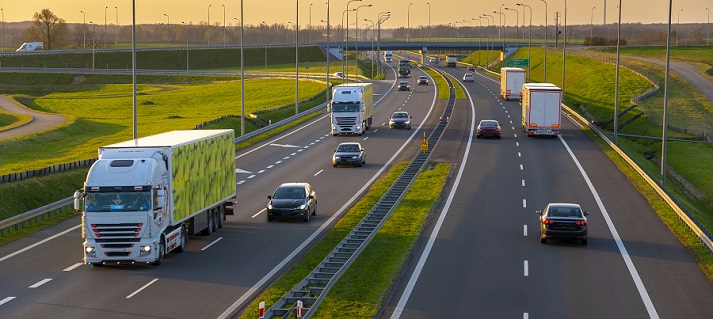
That's right! Cars, buses, motorcycles, mopeds, trains, and emergency vehicles are just some of the many ways people get around on land. Transportation is a way people get from place to place.
- What happens when people need to travel by water?
- What do they use?
Read on to find out about the different types of water transportation and how they help people get across bodies of water.
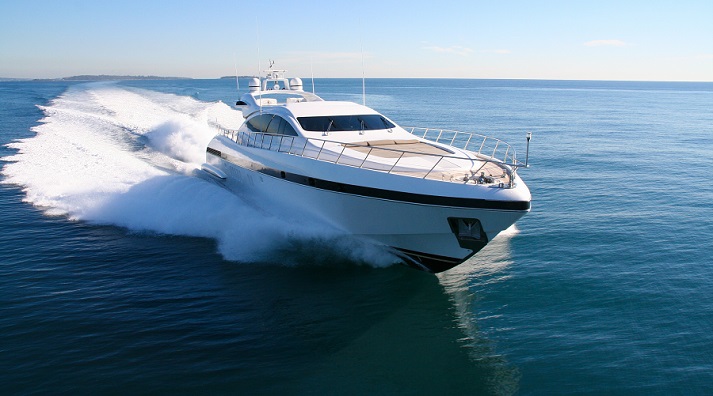
One way people travel across bodies of water is by using sailboats . Sailboats are boats with a special part called a sail . A sail almost looks like a large blanket. It's in the middle of the ship, and when a sail is up, it catches the wind. The wind pushes the boat from place to place.
The person driving the ship uses a steering wheel or moves the sail to guide the boat in the right direction. The sails can be turned to move the boat in a different direction. If the driver wants the boat to slow down or stop, he or she will simply put down the sails. If there's no sail to catch the wind, the boat will slow down or completely stop. Check out the sailboats below.
- Have you ever seen a sailboat before?
Share your answer with your parent or teacher:
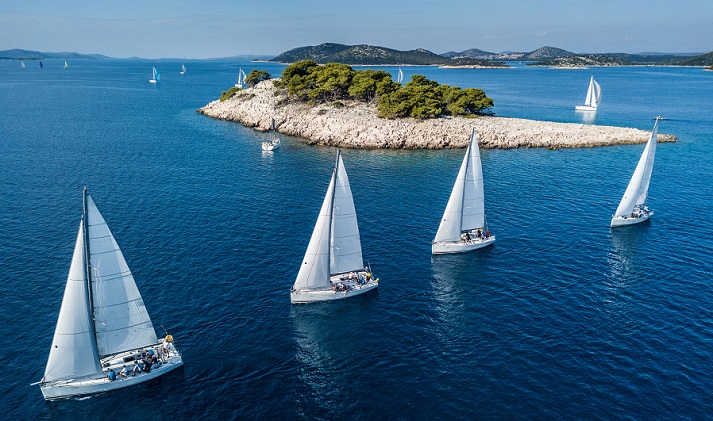
Ships are much bigger than sailboats. Ships usually have large engines that are used to power and move the ship. There are many different types of ships. Cargo ships transport goods like food, furniture, electronics, and much more over bodies of water. They can be seen with big carrying containers on the top.
- Can you see the cargo ship in the first image below?
Another type of ship is a cruise ship . This type of ship carries people from place to place. Generally, people on cruise ships are on vacation. These ships will bring them to tourist destinations all over the world!
- Can you see the cruise ship pictured in the second image?

People can also travel by submarine . Submarines can travel above or under water. Submarines are used by many different types of people. Sometimes they are driven by soldiers or scientists. Soldiers use submarines to monitor the water surrounding different countries. Scientists can use them to study underwater life.
- Did you know submarines have a special tool called a virtual periscope so the people on board can see what is above the water and in the air while the submarine is completely underwater?
Check out the cool submarines below:
- Wouldn't it be cool to experience different ways people use transportation to get from place to place in the water?
- What are at least two examples of ways people get around in the water?
Share your answer with your parent or teacher, then move on to the Got It? section.

Resources and Extras
- kitchen sponge (small rectangle)
- drinking straw
- hole puncher
Additional Resources
- Transportation: Land
- Transportation: Air
Suggested Lessons

What Is a Census?
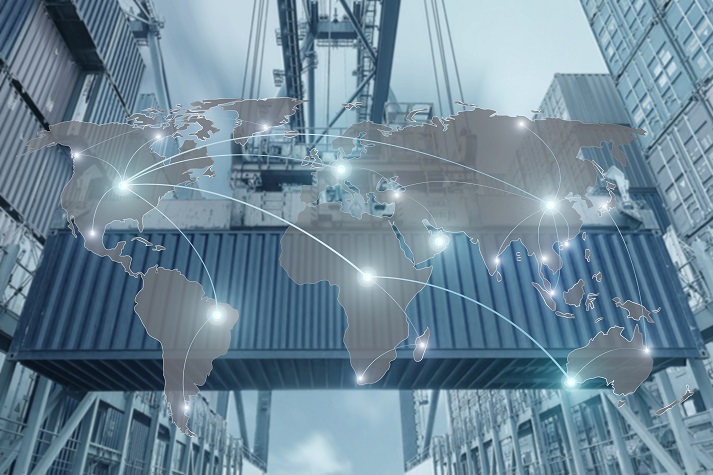
Mapping My Stuff

Civil vs. Criminal Law

History and Progress
- ABBREVIATIONS
- BIOGRAPHIES
- CALCULATORS
- CONVERSIONS
- DEFINITIONS

Vocabulary
What does water travel mean?
Definitions for water travel wa·ter trav·el, this dictionary definitions page includes all the possible meanings, example usage and translations of the word water travel ., princeton's wordnet rate this definition: 0.0 / 0 votes.
water travel, seafaring noun
travel by water
ChatGPT Rate this definition: 0.0 / 0 votes
water travel
Water travel refers to the movement or transportation of people, goods, or animals by means of vehicles such as boats, ships, ferries, submarines, barges, and other vessels designed for navigation in water bodies like seas, oceans, lakes, rivers, canals, and reservoirs for purposes of commerce, recreation, exploration, or military purposes. It can involve short distances or travel across the globe.
Matched Categories
How to pronounce water travel.
Alex US English David US English Mark US English Daniel British Libby British Mia British Karen Australian Hayley Australian Natasha Australian Veena Indian Priya Indian Neerja Indian Zira US English Oliver British Wendy British Fred US English Tessa South African
How to say water travel in sign language?
Chaldean Numerology
The numerical value of water travel in Chaldean Numerology is: 3
Pythagorean Numerology
The numerical value of water travel in Pythagorean Numerology is: 1
- ^ Princeton's WordNet http://wordnetweb.princeton.edu/perl/webwn?s=water travel
- ^ ChatGPT https://chat.openai.com
Word of the Day
Would you like us to send you a free new word definition delivered to your inbox daily.
Please enter your email address:

Citation
Use the citation below to add this definition to your bibliography:.
Style: MLA Chicago APA
"water travel." Definitions.net. STANDS4 LLC, 2024. Web. 1 May 2024. < https://www.definitions.net/definition/water+travel >.
Discuss these water travel definitions with the community:
Report Comment
We're doing our best to make sure our content is useful, accurate and safe. If by any chance you spot an inappropriate comment while navigating through our website please use this form to let us know, and we'll take care of it shortly.
You need to be logged in to favorite .
Create a new account.
Your name: * Required
Your email address: * Required
Pick a user name: * Required
Username: * Required
Password: * Required
Forgot your password? Retrieve it
Are we missing a good definition for water travel ? Don't keep it to yourself...
Image credit, the web's largest resource for, definitions & translations, a member of the stands4 network, free, no signup required :, add to chrome, add to firefox, browse definitions.net, are you a words master, malicious satisfaction, Nearby & related entries:.
- water torch
- water tower noun
- water trading
- water trail
- water transportation
- water travel noun
- water treatment
- water trefoil
- water trough
- water trumpet noun
Alternative searches for water travel :
- Search for water travel on Amazon


An official website of the United States government
Here’s how you know
Official websites use .gov A .gov website belongs to an official government organization in the United States.
Secure .gov websites use HTTPS A lock ( Lock A locked padlock ) or https:// means you’ve safely connected to the .gov website. Share sensitive information only on official, secure websites.
JavaScript appears to be disabled on this computer. Please click here to see any active alerts .
Navigable Waters Protection Rule
- Navigable Waters Protection Rule Materials
- Public Comment Period (concluded)
The final "Revised Definition of 'Waters of the United States'" rule was published in the Federal Register on January 18, 2023, and took effect on March 20, 2023. On August 29, 2023, the agencies issued a final rule amending the Code of Federal Regulations to conform the January 2023 Rule’s definition of “waters of the United States” to the Supreme Court decision in Sackett v. Environmental Protection Agency . The conforming rule amends the provisions of the agencies’ definition of “waters of the United States” in the January 2023 Rule that are invalid under the Supreme Court’s interpretation of the Clean Water Act in the Sackett decision . The conforming rule, “Revised Definition of ‘Waters of the United States’; Conforming,” became effective on September 8, 2023 upon publication in the Federal Register . Please visit the Rule Status page for additional information about the status of the January 2023 Rule, as amended, and litigation. More information about current implementation of the definition of "waters of the United States" is available here .
Clean Water Act Approved Jurisdictional Determinations
Army Corps of Engineers Website
Clean Water Act Summary
Other CWA Policies and Guidance
The following documents are associated with the 2020 Navigable Waters Protection Rule (2020 NWPR), which was vacated by two district courts and has been replaced in the Code of Federal Regulations (CFR) by the January 2023 Rule, as amended by the conforming rule. The 2020 NWPR is not in effect and the materials below are provided for informational purposes.
Navigable Waters Protection Rule Materials
- Final Rule: The Navigable Waters Protection Rule: Definition of “Waters of the United States”
- Economic Analysis
- Resource and Programmatic Assessment
- Access All Supporting Documents
Navigable Waters Protection Rule Public Comment (concluded)
On December 11, 2018, the Environmental Protection Agency and the Department of the Army proposed a revised definition of “waters of the United States” that clarifies federal authority under the Clean Water Act. The proposed rule published in the Federal Register (FR) on February 14, 2019 and was open for a 60-day public comment period. The public comment period closed on April 15, 2019. Comments were posted to Docket ID No. EPA-HQ-OW-2018-0149 and can be found here .
In addition, the agencies established an administrative docket, Docket ID No. EPA-HQ-OW-2017-0480 , to solicit pre-proposal recommendations for the Step 2 rulemaking to define “waters of the United States.” The docket closed on November 28, 2017. Written recommendations can be found here in the docket.
- Waters of the United States Home
- Programs Utilizing the Definition of Waters of the United States
- Rule Status and Litigation Update
- Implementation Tools and Methods
- Amendments to the 2023 Rule
- Training Presentations
- Public Outreach and Stakeholder Engagement Activities
- Skip to global NPS navigation
- Skip to the main content
- Skip to the footer section

Exiting nps.gov
Anilca, navigability, and sturgeon.
NPS/D. LILES
The passage of ANILCA saw the expansion of protected status to massive swaths of Alaska, encompassing millions of acres of newly designated national parks, preserves, and other conservation units. The legislation sought to extend protection to conserve these expansive landscapes and the waters that run through them, some of which being so central to the conception of these newly designated units that they became their namesake. But while ANILCA emphasized the conservation of these areas, it also included compromises to protect the interests of Alaskans in ways atypical in comparison to national parks in other states. These compromises touch on a number of subjects that have wide ranging implications, and the conservation and jurisdiction of the water bodies within ANILCA conservation system units (CSUs) are no exception. These implications were made apparent to the National Park Service in Alaska when rangers in Yukon-Charley Rivers National Preserve stopped a man on a hovercraft on the Nation River in 2007. The rangers warned the man that his hovercraft was not allowed in the preserve based on NPS regulations and he subsequently left. The issue was not dropped there, however, as this man, John Sturgeon, went on to file a lawsuit against the National Park Service arguing that a specific portion of ANILCA prevents the NPS from enforcing their regulations on navigable waters. Sturgeon argued that Section 103(c) of ANILCA prevents NPS from enforcing their regulations on the Nation River and other waters whose submerged lands are owned by the State ( Sturgeon v. Frost , 577 U.S. ___ (2016)). Section 103(c) prevents lands within conservation system units that are owned by the State, Alaska Native Corporations, or that are privately owned from being subject to regulations applicable solely to public lands. This provision was a compromise to prevent the lives of those who already lived within the newly designated units from being disrupted by their creation (16 U.S.C. § 3103(c)). The case proceeded through the District Court and 9 th Circuit Court of Appeals and then came before the Supreme Court who decided that 103(c) draws a distinction between public and non-public lands and remanded the case to the circuit court to decide if the Nation River was public land ( Sturgeon v. Frost , 577 U.S. ___ (2016)). When the case made it back to the Supreme Court ( Sturgeon v. Frost , 587 U.S. ___ (2019) “Sturgeon II”), they issued a unanimous decision that the Nation River was not public land by virtue of its state ownership, and therefore it (and by implication all waters whose submerged lands are not federally owned) were not subject to NPS regulation. The Court did acknowledge that federal subsistence fishing regulations applied on navigable waters within or adjacent to federal lands as a result of the outcome of the Katie John series of cases ( Alaska v. Babbitt , 72 F.3d 698 (9 th Cir. 1995)). In their acknowledgement, however, the Court refused to address federal subsistence fishing regulations since they were not at issue in Sturgeon II , leaving the Katie John rulings potentially open to future change. This decision has rippling implications for the National Park Service in Alaska, as now their ability to manage the waterbodies that are protected within ANILCA-designated units is brought into question. NPS authority over these waters became a question of the ownership of their submerged lands following Sturgeon II . This ownership of submerged lands is in itself a complicated legal question with a long history rooted in ideas about state sovereignty. As a sovereign, states hold title to the submerged lands of the navigable waters within their borders, a concept that relies upon the legal construct of navigability for title purposes to decide what is and isn’t navigable. Navigability for title purposes (which we will just refer to as navigability from here) has evolved over its history as court rulings have specified criteria and parameters defining its application. Waters are considered on a case-by-case and sometimes segment-by-segment basis based on these criteria to determine the ownership of their submerged lands and, post- Sturgeon II , who has the authority to manage them.
A Brief History of Navigability
Legal questions regarding the ownership of submerged lands based on their navigational use have a long history. In Roman law, a distinction was made between public and private submerged lands based on their use and on characteristics such as their ephemerality (MacGrady 1975). Within English common law, the sovereign (the monarch) owned the beds of all navigable waters as a means to ensure their use as highways for transportation and to ensure the sovereign’s authority to regulate and tax that use. As a consequence of English geography, specifically the lack of major navigable inland waterbodies, the definition of navigability in English common law was limited solely to tidally influenced waters as they were the only waters viable for this sort of use. As subjects of the British Empire the American colonies operated under the legal system of English common law. Following independence, American law remained rooted in many English common law principles, and many of these principles and practices are recognizable within the American legal system today (Robbins Collection 2017). The strong emphasis on judicial precedent, the use of an adversarial system in which two opposing parties (a plaintiff and a defendant) compete before a moderating judge, and the use of a jury of ordinary people without legal training to decide on the facts of a case are all components of English common law that were carried over into the legal system of the United States. Like many of these principles, navigability in American law extends from English common law. Within U.S. law navigability first arose as an issue of state sovereignty. In an 1842 case centered on a dispute over who possessed the right to harvest oysters in a certain bed in New Jersey, the Supreme Court ruled that the State of New Jersey held title to the lands beneath navigable waters in public trust as the sovereign successor to the English Crown ( Martin v. Waddell , 41 U.S. 367 (1842)). This established the principle of state ownership of the submerged lands of navigable waters within the United States and affirmed it as an incident of state sovereignty. Several years later in 1845, the case of Pollard’s Lessee v. Hagan (44 U.S. 212 (1845)) saw the application of the Equal Footing Doctrine to the question of navigability. The Equal Footing Doctrine is a principle in constitutional law that new states are admitted to the union on an “equal footing” with the original 13 states. Pollard’s Lessee v. Hagan concerned the ownership of the submerged lands between the shores of navigable waters within Alabama. The Supreme Court decided that the State of Alabama received title to these submerged lands upon statehood on an equal footing with the original 13 states. Up until this point, in the U.S. the question of navigability was restricted solely to the submerged lands beneath tidally influenced waters just as it was within English common law. However, the 1851 case of The Propeller Genesee Chief v. Fitzhugh (53 U.S. 443 (1851)) brought this principle into question. The case concerned whether or not the federal government had admiralty jurisdiction over the nation’s rivers and lakes as well as its tidal waters. The Supreme Court held that the tidal waters doctrine of common law was not appropriate for American jurisprudence as the geography of the United States, with its many navigable inland rivers and lakes, was significantly different from that of England. The Court therefore rejected the tidal test as the sole qualifier of navigability and held that inland waters that were navigable in fact fall within federal admiralty jurisdiction. With the construct of navigability now expanded to include waters that are navigable in fact (versus just tidal waters) there subsequently arose a question of how to define “navigable in fact.” This definition would come two decades later in the 1870 case of The Daniel Ball (77 U.S. 557 (1870)). In considering a question of interstate commerce and federal jurisdiction over it, the Supreme Court established what would become the classical definition of navigability:
Those rivers must be regarded as public navigable rivers in law which are navigable in fact. And they are navigable in fact when they are used or are susceptible of being used in their ordinary condition as highways for commerce over which trade and travel are or may be conducted in the customary modes of trade and travel on water.
This definition highlights several elements that must be considered when assessing navigability. The ruling established commerce (in the form of trade and travel) as the test for navigability. In other words, for a waterbody to be navigable it must have supported or been susceptible to supporting commerce. The susceptibility component indicates that there does not need to be an established history of commerce for a waterbody to be navigable so long as the characteristics of that waterbody indicate it could support such use. The definition also specifies that the waterbody must be in its ordinary condition, essentially stating that it could not have been modified to make it more or less navigable (such as by dredging or the construction of a dam). Further, this definition states that navigability is based on trade and travel upon water, therefore, use while frozen (for example a frozen river being used as a dogsled route) is not evidence of navigability. Finally, The Daniel Ball definition states that the commerce evidencing navigability must be conducted in the customary modes of trade and travel on water. This means that the waterbody must be capable of supporting commerce in crafts that would be typically used. With the definition for navigability finally in place it was then refined over time. In 1874 in The Montello , the Supreme Court held that the presence of a portage along a waterbody did not render it non-navigable ( The Montello , 87 U.S. 430 (1874)). In 1922, the Court ruled in Oklahoma v. Texas (258 US 574 (1922)) that waters that were only navigable during periods of spring flooding were not navigable for title purposes. 1953 saw the passage of the Submerged Lands Act (43 U.S.C. § 1301 et seq.), which codified the long-affirmed principle of state ownership of the submerged lands of navigable waters into statute and further refined the parameters of navigability. The Act specified the time of statehood as the timeframe to be considered when determining navigability. That means that when considering evidence of navigability, the conditions of the waterbody at the time of statehood, as well as the types of crafts that would be customary at this time, must be considered. The Act also delineates the boundary of the submerged lands as being the line of the ordinary high-water mark (often taken to be the line of permanent vegetation for the sake of simplicity). Finally, the Act also specifies that title moves with instances of accretion, erosion, and reliction. In other words, title moves with the slow, natural migration of the meanders of a waterbody over time. However, title does not move in instances of avulsion, where the course of a river rapidly redirects. The second half of the 20 th century saw further refinement of the definition. The 1979 appeal of Doyon Ltd. to the Alaska Native Conveyance Approval Board offered several criteria specific to Alaska (ANCAB RLS 76-2, 86 I.D. 692 (1979)). The Board held that evidence of private use of a waterbody can demonstrate susceptibility, that poleboats, tunnel boats, and outboard motor-powered riverboats were customary crafts in Alaska at the time of statehood, and that present day recreational use can serve as corroborative but not definitive evidence of navigability. In 1983, the District Court for Alaska ruled that use of a waterbody for floatplane landings is not evidence of navigability ( State of Alaska v. United States , 563 F. Supp. 1223 (1983)). More recently, navigability was considered by the Supreme Court in the 2012 case of PPL Montana v. Montana (565 U.S. 576 (2012)). In this case, the Court established that modern recreational use could be evidence of susceptibility if it is proven to be meaningfully similar to customary use at the time of statehood. Perhaps more significant, however, was that the Court affirmed the practice of segmenting waters for navigability determinations. We can then synthesize from this caselaw a definition of a navigable water as one that is actually used or is susceptible to being used as a highway for trade, travel, and commerce in the waterway’s natural and ordinary condition (at the time of statehood) in crafts customary at the time of statehood . Though far from comprehensive, this history demonstrates how navigability was and continues to be an evolving construct.
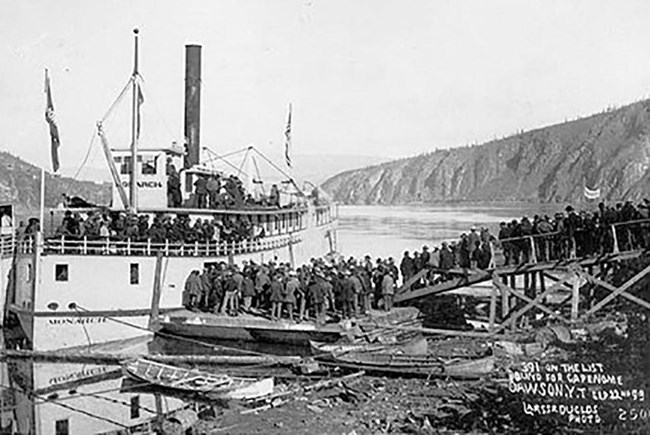
ALASKA DIGITAL ARCHIVES
Navigability Criteria
Now that we have a definition of navigable, we will take a closer look at some of the criteria for assessing navigability. A key component in the Daniel Ball definition of navigable is that the waterbody must be able to accommodate commerce. It is important, then, to consider what commerce would include. Generally, commerce in this context would be the existence of trade and travel across a waterbody. However, it is important to distinguish between commercial activity and boating in general. An individual taking a canoe down a river on a recreational trip would not be an example of commerce, as it does not represent trade and travel. The simplest way to demonstrate that a waterbody was useful for commerce is to have clear historical evidence of trade and travel, for example photographs and written records of steamships transporting supplies or people on a river. In many cases in Alaska however, no such historical record exists. Therefore, navigability becomes a question of the susceptibility for commerce rather than actual commercial use. In such instances, modern-day non-commercial activities can be evidence of navigability if it can be shown that the watercrafts employed are meaningfully similar to those that would have been customarily used for trade and travel at the time of statehood ( PPL Montana v. Montana (565 U.S. 576 (2012)). We will elaborate more on what “meaningfully similar” means later, but for now we should maintain our focus on commerce. A major consideration in assessing if an activity demonstrates commerce or the susceptibility for commerce is the weight in cargo a watercraft can transport. The issue of how much carrying capacity is necessary to constitute commerce is not an entirely settled legal question. In Alaska, the clearest guidance comes from the 1979 appeal of Doyon Ltd. (ANCAB RLS 76-2, 86 I.D. 692 (1979)). In this case, the board recommended that a net carrying capacity of 1,000 pounds could be used as a minimum threshold for commercial loads. When examining evidence of commerce, another important consideration is whether there is a lack of actual use of a waterbody despite the conditions existing for that use. For example, if trade and travel commonly occur adjacent to a waterbody, but never actually make use of that waterbody to accommodate those commercial activities, that evidence would weigh against the waterbody being navigable ( Oklahoma v. Texas , 258 U.S. 574 (1922)); Muckleshoot Indian Tribe v. FERC , 993 F.2d 1428 (9 th Cir. 1993). However, the presence of an alternate route of commerce alone does not make a waterbody non-navigable.
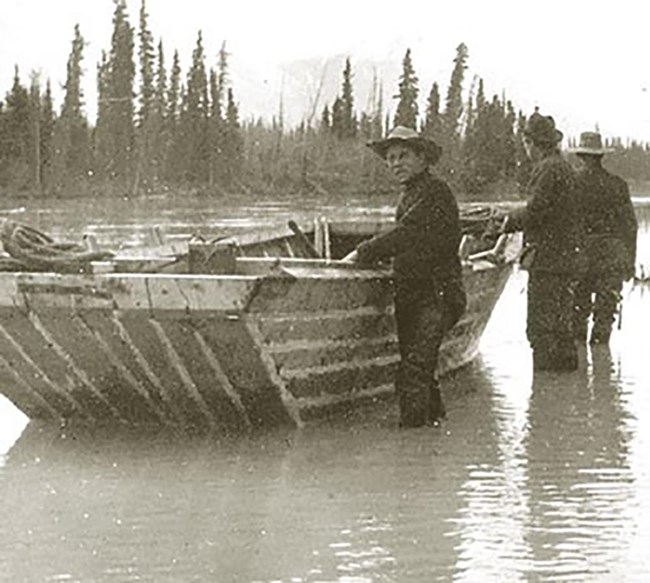
VALDEZ MUSEUM
With a clearer understanding of how commerce is defined and interpreted in the context of navigability, we can now move to a discussion of customary crafts and meaningful similarity. The Daniel Ball definition specifies that commerce must be conducted in the “customary modes” of trade and travel on water. Because the time of statehood is the point in time being considered (as specified by the Submerged Lands Act) that means that “customary modes” would refer to watercraft that were customarily used in Alaska at the time of statehood on January 3, 1959. Guidance on what types of watercrafts were customary in Alaska at the time of statehood comes from the 1979 appeal by Doyon Ltd. (ANCAB RLS 76-2, 86 I.D. 692 (1979)). The board found that pole boats, tunnel boats, and outboard motor-powered riverboats were customary crafts in Alaska at the time of statehood. If these types of crafts are capable of carrying a commercial load (at least 1,000 pounds) they could indicate that a waterbody was susceptible to supporting commerce at the time of statehood (and would therefore likely be navigable). There has been some disagreement between the United States and the State of Alaska over what types of crafts were customary at statehood. For example, the U.S. has not agreed with the State that jet boats were customary at statehood based on their very limited availability in Alaska in 1959 (State of Alaska’s Mot. For Summ. J., Alaska v. United States , No. 3:12-cv-00114-SLG (D. Alaska 2015). During litigation over the Gulkana River, the court did not list jet boats as being customarily used on that river at statehood ( Alaska v. United States , 891 F.2d 1401 (9 th Cir. 1989)). If a waterbody is only traversable in modern crafts that are not meaningfully similar to crafts customary at statehood, then that waterbody would not be navigable ( PPL Montana v. Montana (565 U.S. 576 (2012)). With that being said, it is worth discussing what “meaningfully similar” means. In PPL Montana v. Montana (565 U.S. 576 (2012)) the court ruled that modern day, non-commercial use could be evidence of navigability if it can be shown that the crafts employed are meaningfully similar to crafts customary at the time of statehood. When assessing if a modern craft is meaningfully similar to a craft customary at statehood, a number of factors can be considered. Just as weight capacity is an important consideration in determining susceptibility to commerce, it is also an important characteristic to examine when assessing if a modern craft is meaningfully similar to a customary one. If a modern craft is capable of carrying much greater loads than a customary craft of the same size, they likely would not be meaningfully similar. Additionally, draft requirements (or how far into the water a boat sits) are important to consider. If a modern boat capable of carrying commercial loads can be used in only a few inches of water while a customary boat requires deeper water to carry the same load, those two crafts would not be meaningfully similar. In addition to weight capacity and draft depth, the material a craft is constructed from is also an important consideration. The materials used to construct inflatable rafts have made advancements since 1959. Therefore, modern inflatable rafts may be much more resistant to puncture and abrasion than inflatable rafts available at statehood. As such, these modern rafts would be able to traverse much shallower and rockier waterbodies than rafts at statehood likely could, thus the modern rafts likely are not meaningfully similar to rafts customarily used at statehood. Further, modern rafts often include features such as upturned bows and sterns as well as aluminum rowing frames that provide increased mobility—features that were not common on statehood-era inflatable rafts. A watercraft’s means of propulsion is another important characteristic to consider when assessing a craft’s meaningful similarity to crafts customary at statehood. As noted earlier, there is dispute as to whether jet boats were customary at the time of statehood in Alaska. When compared to propeller-driven boats (which were certainly customary at the time of statehood) jet boats can be used in extremely shallow waters. Prop boats rely on a spinning propeller, which must stick further down into the water column to propel the craft. This spinning propeller runs the risk of striking objects along the bed of a waterbody and becoming damaged, which limits the boat’s ability to be used in shallow waters. In contrast, a jet does not need to stick as far down into the water and does not have a spinning propeller which can become damaged or tangled, enabling jet boats to be used in much shallower waters. Given this drastic difference in maneuverability, and the lack of widespread jet boats in Alaska at the time of statehood, this type of craft likely would not be meaningfully similar to a craft customarily in use at statehood. Now that we have considered different questions about commerce and watercraft, we can move to a discussion about the characteristics of waterbodies themselves. As we noted earlier, historical evidence of commerce occurring on a waterbody is the most convincing evidence for navigability. However, in many if not most instances—particularly in Alaska where many waterbodies are remote and have no history of development—there is little to no historical record. In those instances, navigability becomes a question of susceptibility for use as a highway of commerce rather than actual documented use. When considering susceptibility, we are often-times examining the physical characteristics of a waterbody and assessing if those characteristics would make it useful as a highway for commerce. The depth and gradient (slope) of a waterbody are both important physical characteristics to consider. There is no clear caselaw that establishes specific threshold values for what depths and gradients would make a waterbody navigable, and every waterbody is considered case-by-case based on its particular facts. However, if a waterbody were so steep that it couldn’t safely or reasonably accommodate trade and travel it very likely would not be navigable. Likewise, if a waterbody only had a depth of several inches and could not support a vessel carrying a load of cargo it very likely would not be navigable. Another important physical characteristic to consider is the presence of obstructions along a waterbody that would inhibit travel, such as rapids, boulders, or log jams. The presence of obstructions does not automatically make a waterbody non-navigable. Though the presence of obstructions may make navigation quite difficult, if they can be reasonably portaged around and if the waterbody overall can still support trade and travel it may be navigable ( Oregon v. Riverfront Prot. Assoc ., 672 F. 2d 792 (9 th Cir. 1982)). However, to be navigable the waterbody must still provide a route that is long enough to be useful and valuable in transportation ( N. Am. Dredging Co. of Nev. v. Mintzer , 245 F. 297 (9 th Cir. 1917)). Alongside obstructions, it is also important to consider seasonality when assessing susceptibility. If a waterbody can only be navigated during periods of temporary high water, such as during seasonal floods, or if watercraft must be repeatedly dragged or carried the waterbody is likely non-navigable ( United States v. Oregon , 295 U.S. 1 (1935)). A final thing to note regarding susceptibility and physical characteristics is that a waterbody must be in its natural and ordinary condition at the time of statehood. This means that a waterbody cannot have been modified from its natural condition at the time of statehood to make it more or less navigable. If a waterbody could only be traversed after modification, for example by dredging, then it would not be navigable. Conversely, if a waterbody could have been traversed prior to statehood, but a dam was constructed post statehood that made it impassible, that waterbody could still be navigable since it is the natural and ordinary condition at the time of statehood that must be considered.
Navigability in Alaska: Implementation and Implications
Though the State of Alaska owns the submerged lands beneath navigable waters, there is an important exception: lands that were federally reserved at the time of statehood. If lands were reserved at statehood, and if the withdrawal included intent to reserve the submerged lands, those submerged lands remain in federal ownership regardless of navigability. This applies to the several pre-statehood parks in Alaska—portions of Denali, Katmai, Glacier Bay, and Sitka. If there is no valid pre-statehood withdrawal for a waterbody, ownership of submerged lands (and jurisdiction over them) becomes a question of navigability. The Bureau of Land Management (BLM) is delegated the authority to make navigability determinations under the Federal Land Policy and Management Act (43 U.S.C. § 1701 et. seq.) and is the sole agency with authority to issue navigability determinations that have legal bearing. BLM does this as a part of the land conveyance process to avoid accidentally conveying State-owned submerged lands to another party. When BLM makes navigability deter-minations, they consider the available historical evidence demonstrating a waterbody’s use as a highway for commerce. In the absence of historical evidence, BLM also considers the physical characteristics of a waterbody (such as depth, gradient, seasonal variability, and the presence of obstructions) and if those characteristics indicate that it would be susceptible to commerce. Other agencies such as the NPS or the Alaska Department of Natural Resources may conduct their own research on navigability and publish those findings, but these assessments and any subsequent assertions of ownership and jurisdiction do not have legal bearing in the way that BLM determinations do.
There are two mechanisms for ultimately resolving title. The first of these is known as a Recordable Disclaimer of Interest, or RDI, and is an administrative process for clearing cloud on the title of submerged lands. As an administrative process, an RDI is intended to provide a mechanism for resolving cloud over title that is less costly and time consuming than litigation. The State can apply for an RDI through BLM by submitting a legal description of the claimed lands along with any evidence for navigability, and if the U.S. agrees with the evidence presented federal interest in the title is disclaimed. If BLM decides that the evidence for navigability presented within the RDI application is insufficient they may deny the application, at which point the State can appeal the decision to the Interior Board of Land Appeals—an appellate review body for the Department of the Interior. In instances where the State chooses to not proceed with the RDI process, title can be litigated though what is known as a Quiet Title Action or QTA. The State can file a complaint in federal district court to adjudicate the issue of title to the submerged lands. To do this, the State must have grounds for their complaint such as the federal government taking a management action on State-claimed waters (for example the issuance of a BLM determination of non-navigable). Before the State may file a complaint, they must provide the United States with a 180-day notice of intent to file a Quiet Title Action. There is a contentious history of disagreement between states and the U.S. over navigability and Alaska is no exception. Following the outcome of the Sturgeon II decision, the State has become much more aggressive in asserting claims of ownership of submerged lands within federally protected areas. In 2021, it announced its “Unlocking Alaska” initiative in which Alaska has claimed ownership of nearly all waters within ANILCA-designated NPS units. In October of 2021 the State submitted a Notice of Intent to the U.S. to file a QTA for Twin Lakes, Turquoise Lake, and portions of the Mulchatna and Chilikadrotna Rivers within Lake Clark National Park and Preserve. In late April of 2022, the State of Alaska followed this up by filing a complaint within federal district court to quiet title to these submerged lands, thereby initiating litigation. In concert with filing for litigation, the State also submitted a notice of trespass to NPS for an NPS-owned dock on another waterbody within Lake Clark National Park and Preserve. Additionally, the State submitted a notice to cease and desist to the U.S. Forest Service for enforcing a regulation that prohibits the use of motorized watercraft on Mendenhall Lake. Also, as a part of their initiative, the State of Alaska has released a web map that depicts most waters within CSUs as State owned, despite the lack, in most cases, of a BLM navigability determination or a final title resolution. This has the potential to mislead and confuse the public regarding whether these areas are subject to federal CSU regulations. The outcome of Sturgeon v. Frost II has obscured the extent of the NPS’s regulatory authority over the waters within NPS CSUs in Alaska. There are now valid concerns over what activities may occur on waters within parks. Activities that are authorized under State regulations, such as suction dredge mining, could now occur within the boundaries of NPS CSUs (see ANILCA: A Perspective from Boots on the Ground ). This management challenge is compounded by increasingly aggressive assertions of ownership made by the State. All of this has left the NPS in an uncertain position where land managers, in many cases, are not sure what they are able to manage, with no clear path forward on how to preserve these lands designated for protection by ANILCA.
Alaska v. United States , 891 F.2d 1401 (9 th Cir. 1989) Alaska National Interest Conservation Lands Act, 16 U.S.C. § 3103(c) Federal Land Management Policy and Management Act, 43 U.S.C. § 1701 et. seq. MacGrady, G. J. 1975. The Navigability Concept in the Civil and Common Law: Historical Development, Current Importance, and Some Doctrines That Don’t Hold Water, 3 Fla. St. U. L. Rev. 511. https://ir.law.fsu.edu/lr/vol3/iss4/1 Martin v. Waddell , 41 U.S. 367 (1842) Muckleshoot Indian Tribe v. FERC , 993 F.2d 1428 (9 th Cir. 1993) N. Am. Dredging Co. of Nev. v. Mintzer , 245 F. 297 (9 th Cir. 1917) Nation and Kandik Rivers: Appeal of Doyon Ltd., ANCAB RLS 76-2, 86 I.D. 692, Dec. 14, 1979 Oklahoma v. Texas , 258 U.S. 574 (1922) Oregon v. Riverfront Prot. Assoc ., 672 F. 2d 792 (9 th Cir. 1982) Pacific Power & Light (PPL) Montana v. Montana , 565 U.S. 576 (2012) Pollard’s Lesse v. Hagan et al. , 44 U.S. 212 (1845) Robbins Collection, Berkley Law 2017. The Common Law and Civil Law Traditions. https://www.law.berkeley.edu/research/the-robbins-collection/exhibitions/common-law-civil-law-traditions/ State of Alaska v. Babbitt , 72 F.3d 698 (9 th Cir. 1995) State of Alaska v. United States , 563 F. Supp. 1223 (D. Alaska 1983) State of Alaska’s Mot. For Summ. J. at 23-25, Alaska v. United States , No. 3:12-cv-00114-SLG (D. Alaska June 1, 2015), E.C.F. No. 65 Sturgeon v. Frost , 577 U.S. ___ (2016) Sturgeon v. Frost , 587 U.S. ___ (2019) Submerged Lands Act of 1953, 43 U.S.C. § 1301 et seq. The Daniel Ball , 77 U.S. 557 (1870) The Montello , 87 U.S. 430 430 (1874) The Propeller Genesee Chief , 53 U.S. 443 (1851) United States v. Oregon , 295 U.S. 1 (1935)
Part of a series of articles titled Commemorating ANILCA at 40 .
Previous: The Power of a Few Words: How ANILCA Preserves the Human History of Alaska’s Public Lands
Next: ANILCA: A Perspective from Boots on the Ground
You Might Also Like
- alaska park science
Last updated: June 23, 2022
- More from M-W
- To save this word, you'll need to log in. Log In
Definition of water
(Entry 1 of 2)
Definition of water (Entry 2 of 2)
transitive verb
intransitive verb
- dowse
Examples of water in a Sentence
These examples are programmatically compiled from various online sources to illustrate current usage of the word 'water.' Any opinions expressed in the examples do not represent those of Merriam-Webster or its editors. Send us feedback about these examples.
Word History
Middle English, from Old English wæter ; akin to Old High German wazzar water, Greek hydōr , Latin unda wave
before the 12th century, in the meaning defined at sense 1a
before the 12th century, in the meaning defined at transitive sense 1
Phrases Containing water
- above water
- American water spaniel
- ammonia water
- blood is thicker than water
- branch water
- casual water
- coconut water
- come hell or high water
- dead in the water
- dip / put / stick a toe in the water
- drinking water
- first water
- fish out of water
- fresh water
- giant water bug
- have ice water in her veins
- heavy water
- hell or high water
- high - water mark
- hot - water bottle
- ice water in one's veins
- in deep water
- Irish water spaniel
- Javelle water
- keep one's head above water
- light water
- (like) water off a duck's back
- milk - and - water
- mineral water
- on the water wagon
- Portuguese water dog
- quinine water
- running water
- salt water taffy
- slack water
- spring water
- still water
- take to something like a duck (takes) to water
- test the water
- throw cold water on
- toilet water
- tonic water
- tread water
- Vichy water
- water balance
- water ballet
- water balloon
- water beetle
- water biscuit
- water blister
- water bloom
- water boatman
- water bottle
- water breaks
- water buffalo
- water cannon
- water chestnut
- water clock
- water closet
- water column
- water cremation
- water cycle
- water fountain
- water garden
- water gauge
- water glass
- water hammer
- water heater
- water hemlock
- water hyacinth
- water jacket
- water level
- water meadow
- water meter
- water milfoil
- water moccasin
- water nymph
- water of crystallization
- water of hydration
- water on the knee
- water ouzel
- water parting
- water pepper
- water pimpernel
- water pistol
- water plantain
- water pressure
- water privilege
- water - repellent
- water - resistant
- water right
- water sapphire
- water scorpion
- water shield
- water - skier
- water snake
- water - soak
- water spaniel
- water sprite
- water sprout
- water strider
- water supply
- water table
- water tower
- water trail
- water turkey
- water under the bridge
- water vapor
- water - vascular system
- water wagon
- water wings
- water witch
- water witcher
- white water
Articles Related to water
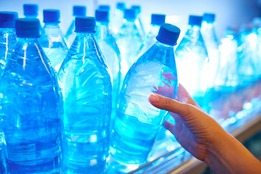
What's the plural of 'water'?
What about 'sand'? Or 'fish'?
Dictionary Entries Near water
water adder
Cite this Entry
“Water.” Merriam-Webster.com Dictionary , Merriam-Webster, https://www.merriam-webster.com/dictionary/water. Accessed 1 May. 2024.
Kids Definition
Kids definition of water.
Kids Definition of water (Entry 2 of 2)
Medical Definition
Medical definition of water.
Medical Definition of water (Entry 2 of 2)
More from Merriam-Webster on water
Nglish: Translation of water for Spanish Speakers
Britannica English: Translation of water for Arabic Speakers
Britannica.com: Encyclopedia article about water
Subscribe to America's largest dictionary and get thousands more definitions and advanced search—ad free!

Can you solve 4 words at once?
Word of the day.
See Definitions and Examples »
Get Word of the Day daily email!
Popular in Grammar & Usage
More commonly misspelled words, commonly misspelled words, how to use em dashes (—), en dashes (–) , and hyphens (-), absent letters that are heard anyway, how to use accents and diacritical marks, popular in wordplay, the words of the week - apr. 26, 9 superb owl words, 'gaslighting,' 'woke,' 'democracy,' and other top lookups, 10 words for lesser-known games and sports, your favorite band is in the dictionary, games & quizzes.

More From Forbes
5 boutique luxury hotels you can’t miss in sri lanka.
- Share to Facebook
- Share to Twitter
- Share to Linkedin
Sri Lanka may conjure ideas of tropical coastlines flanked with palm-trees but this island is more than just a paradise for beaches. With 8 UNESCO World Heritage Sites, sacred cities and tea plantations, there’s a lot to experience in Sri Lanka’s interior during your trip. The “Cultural Triangle” — which includes Anuradhapura, Sigiriya, Polonnaruwa, Dambulla and Kandy — showcases the glory of Sri Lanka’s ancient empires, while its hill towns speak to its modern history as a British colony and are ideal for hiking, relaxing and immersing yourself in the country’s lush landscapes.
Here are the best luxury hotels to stay in to explore the many marvels of Sri Lanka’s vast interior. And if you’re looking for beachside accommodations, check out the best boutique hotels along Sri Lanka’s southern coast .
Uga Ulagalla
Effusively elegant and refined, Uga Ulagalla is the flagship property of Uga Escapes, a locally owned, sustainable luxury hospitality brand that boasts six hotels throughout the country. Opened in 2010, this sumptuous estate captures the country’s Dutch colonial flair: the hotel has 25 villas with pools dotted throughout the vast property with tasteful furnishings like chaise lounges, four-poster beds and stand-alone bathtubs. You can pick between views of the green paddy field, jungle fauna or tranquil lakes.
An expansive estate that sits on 58 acres, Sri Lanka's lush vegetation is on your doorstep, whether you opt to go kayaking or horseback riding in lakes with flowering lily pads or cycling through to nearby villages. The property can also arrange guided tours of cultural attractions including the Sacred City of Anuradphaura, with its many Buddhist temples and stupas, and Mihintale, an important pilgrimage site set upon three peaks. If you’re after the local fauna, book a scenic game drive that takes you off-the-beaten-path to Nachchaduwa Lake, a popular spot that attracts a myriad of birds, buffalos and elephants.
Uga Ulagalla’s 150-year-old mansion is the focal point of the property where you can enjoy your breakfast al fresco on the upper deck of Liyawela restaurant or sunbathe at the main swimming pool. In the evening, don’t miss the property’s signature “Kamatha” dining experience which serves an endless array of traditional Sri Lankan curries in a typical village home surrounded by paddy fields. A veritable epicurean feast, the spread features seasonal vegetables from the property's organic farm — like luffa gourd and starfruit — along with lake fish and free-range meats sourced from local farmers. A multi sensory experience for the palate.
Apple s iPhone 16 Pro Design Revealed In New Leak
Charlotte shooting 4 officers killed while serving warrant, wwe raw results winners and grades after wwe draft night 2.
Water Garden Sigiriya
Just a short drive from Sigiriya, a 5 th -century AD royal palace located on top of a towering rock that dominates the skyline, Water Garden Sigiriya is an ideal base to visit Sri Lanka’s leading attraction. Set upon dozens of shimmering ponds and streams, the resort’s landscaping pays homage to the landscape designs atop Sigiriya’s citadel where Prince Kashyapa implemented advanced water irrigation techniques 2,000 years ago.
Water Garden Sigiriya is home to abundant wildlife, including 200 peacocks that roam freely around 30 spacious villas set upon the manicured property. Deluxe Villas are partially submerged on a natural lake, while Superior Deluxe Villas offer exclusive views of Sigiriya and boast spacious sundecks with private pools. At the center of the property, Twin Level Bar overlooks Water Garden Sigiriya's scenic outdoor swimming pool which is particularly enticing at sunset. Each evening, the Main Restaurant provides a curated tasting menu for guests alongside an à la carte menu with an extensive range of local and international dishes.
From Sigiriya, culture enthusiasts can easily reach the Ancient City of Polonnaruwa in 1-hour and the incredible painted Cave Temples of Dambulla in 30-minutes, two other must-see sites in Sri Lanka's cultural triangle. Nature lovers can enjoy outdoor activities which include archery, nature walks and a jeep safari of nearby Minneriya National Park, which boasts the world’s largest gathering of Asian elephants.
98 Acres Resort & Spa
What began as a thriving tea business has expanded into 98 Acres Resort & Spa : a fully-fledged hospitality and lifestyle brand. Owned by the same family that founded Halpé Tea, one of the largest tea factories in Sri Lanka, 98 Acres has 36 woodsy chalets suspended in the hillside. Designed with natural materials for an upscale, rustic feel, accommodations feature hard-wood floors, rubble stone bathrooms and furniture made with upcycled railway sleepers. The Royal Deluxe room features a roll-out bed where you can enjoy breakfast in bed while admiring views of Little Adam's Peak, while the Grand Executive Suites feature private plunge pools.
Set along the hiking route to Little Adam’s Peak, visible in the distance from your private balcony, 98 Acres offers a luxurious nature immersion in Sri Lanka’s Hill Country. The colorful town of Ella, lined with bohemian cafes and small boutiques, is just a short tuk tuk ride away, and it’s a leisurely walk to the famous Nine Arches Bridge from here. Restaurant 98, spread out within a large hut at the top of the resort, serves a buffet breakfast and daily-changing set menu for lunch and dinner each day. Offering international and local dishes, the cuisine is a stand-out and will make it difficult to leave the property.
In addition to the 98 Acres fabulous spa and resort activities, which include bird watching and private cooking classes, guests can enjoy a more social atmosphere at the Ravana Pool Club or go zip-lining on the Flying Ravana Adventure through the hills. And don’t miss exploring the Halpé Tea plantation on a factory tour, which offers a unique insight into Sri Lanka’s longstanding tea heritage.
Camellia Hills
A stylish bungalow overlooking the picturesque Castlereagh Reservoir, Camellia Hills is an intimate retreat from the world surrounded by undulating tea plantations. Part of the Teardrop Hotels collection, it is one of the group’s seven boutique properties around Sri Lanka which promise exceptional service and amenities in unique locations throughout the island.
With only five bedrooms, the property operates more like a home than a hotel, and the staff’s warm and relaxed demeanor will make you feel like you’re visiting your chic friend’s countryside estate. At Camellia Hills, everything is highly personalized, and no request is too small. You can enjoy farm-to-table fresh meals at any time of the day, borrow books from the bungalow’s vast collection and enjoy leisurely strolls in the naturally manicured estate that surrounds you.
The home’s inviting open-air plan, with vaulted living room and outdoor patio, will surely coax you away from the comforts of your bedroom. Spend afternoons luxuriating by the infinity pool, sipping cocktails on the terrace or relaxing with a pot of tea by the fireplace. Despite its small size, Camellia Hills has designed an enticing menu with an array of creative dishes, from seafood pumpkin gnocchi and hoisin glazed pork skewers to wok-fried rice noodles with tamarind tofu. Dishes are made expressly for guests, guaranteeing fresh, seasonal flavors at every meal.
An ideal escape for couples or families eager to spend a few days unwinding between sightseeing, you can enjoy a number of curated activities in the area. Explore Castelreagh’s bright turquoise hues up close with an excursion on a fisherman’s canoe or enjoy picnics in scenic locations including nearby waterfalls and secret viewpoints in the tea plantation. Or experience a once-in-a-lifetime hike up to Adam’s Peak, a pilgrimage site for Buddhists, Muslims, Hindus and Christians.
A petite boutique hotel in the fishing village of Negombo, Uga Riva is the newest member of Uga Escapes just opened last November 2024. Set within a 180-year-old manor house — the former residence of the prominent Colombo Chetty family — this 6th-generation family home has welcomed many notable figures throughout the decades. In 1927, Mahatma Gandhi visited the property during his visit to Sri Lanka (formerly known as Ceylon) and planted a tree in the garden.
This 5-acre coconut plantation is the perfect place to kick-off, or end your trip, through Sri Lanka thanks to its proximity to the airport. Colombo International Airport is just 30-minute drive away, making Negombo a more strategic base compared to Colombo. But when you step inside, you’ll realize this is much more than a traditional “airport” hotel.
With only seven bedrooms and exclusive access for guests, this tranquil resort offers privacy and seclusion from the world. The central swimming pool is a peaceful place to unwind after enjoying a meal at Uga Riva’s restaurant, which serves Sri Lankan and international specialties with a spin. Beneath the verandas, period furnishings are juxtaposed with contemporary illustrations and watercolors by Sri Lankan artists.
No matter what time you arrive, the staff will be on hand to welcome you with a warm smile and a refreshing drink. For an airport that receives visitors at all hours of the day and night, this kind of service is priceless. Uga Riva is a great place to rest, recharge and continue your onwards journey.
See More : The Best Hotels Along Sri Lanka’s Southern Coast
- Editorial Standards
- Reprints & Permissions
Kansas tornado leaves 1 dead, destroys homes during multiday severe weather event
At least five people were killed during a severe weather outbreak in the plains and midwest over the weekend, which spawned more than 100 tornadoes that devastated several communities..

1 dead, several injured in Kansas tornado
At least one person was killed and several others were injured when a tornado tore through the community of Westmoreland in Kansas outside of Topeka on Tuesday, April 30, 2024.
WESTMORELAND, Kan. – One person was killed, and several others were injured by a tornado that tore through a community outside of Topeka in Kansas on Tuesday afternoon as severe weather pushed through regions of the Plains and Midwest that were hit hard by a deadly tornado outbreak last weekend .
‘HOLD ON’: WATCH AS TRAIN IS CAUGHT IN PATH OF NEBRASKA EF-3 TORNADO
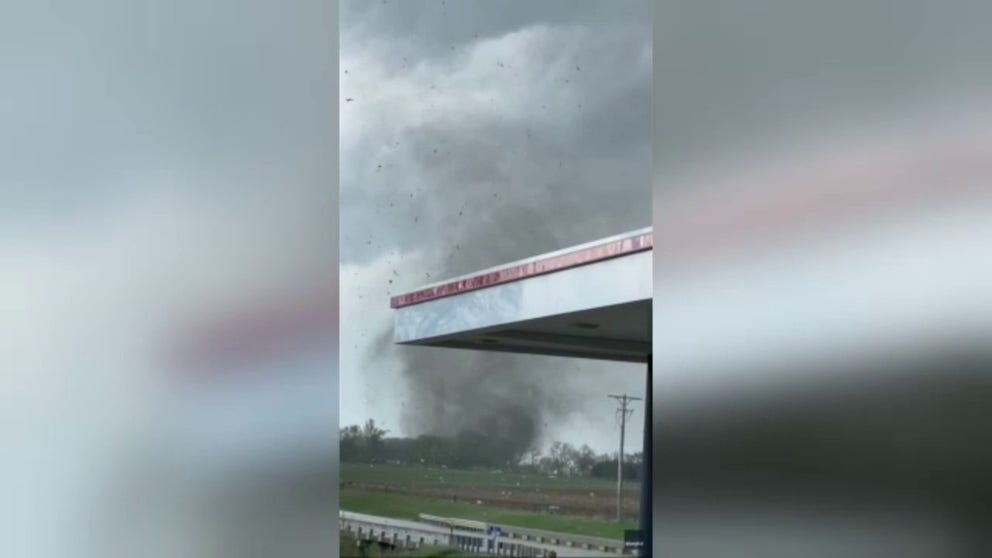
Watch: Deadly tornado tosses debris into the air in Westmoreland, Kansas
Video recorded by Buster Schmitz shows debris flying through the air as a large funnel cloud forms overhead during a tornado in Westmoreland, Kansas, on Tuesday, April 30, 2024.
The hardest-hit region appeared to be in Pottawatomie County, where officials confirmed the death and injuries in the town of Westmoreland .
Damage in the Kansas town was considerable, with county officials saying nearly two dozen homes were destroyed, and another 13 homes that were damaged by the tornado. At least one commercial building was also damaged during the extreme weather event.
SEE IT: TORNADO TOSSES HUGE DEBRIS AT STORM CHASING FAMILY IN OKLAHOMA
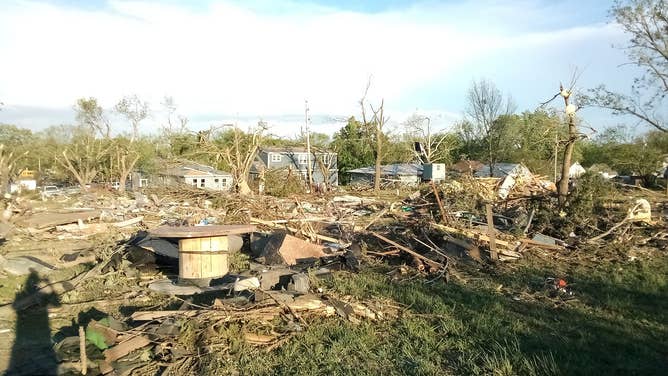
Tornado damage in Westmoreland, Kansas (Kucheras BBQ)
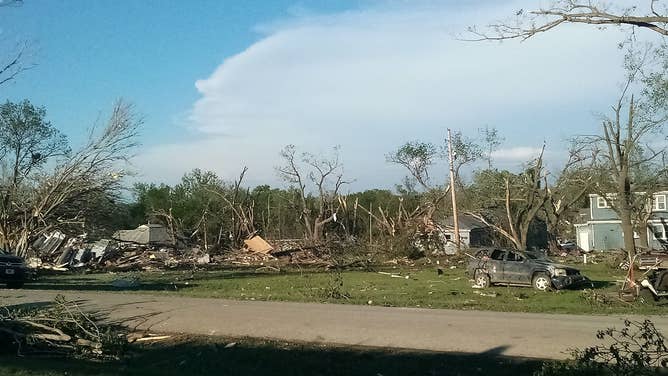
Tornado impacts Westmoreland, Kansas on 4/30/2024 (Sarah Nicole)
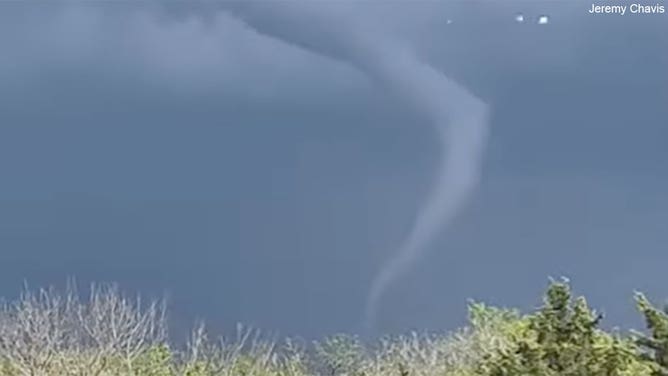
A tornado is seen near Westmoreland, Kansas, on April 30, 2024. (Jeremy Chavis/Facebook)
Pottawatomie County Sheriff Shane Jager said a curfew was enacted Tuesday night, and the cleanup from the storm could take days. County Spokesperson Becky Ryan said a shelter had been set up for residents, but it’s unknown if any took refuge overnight.
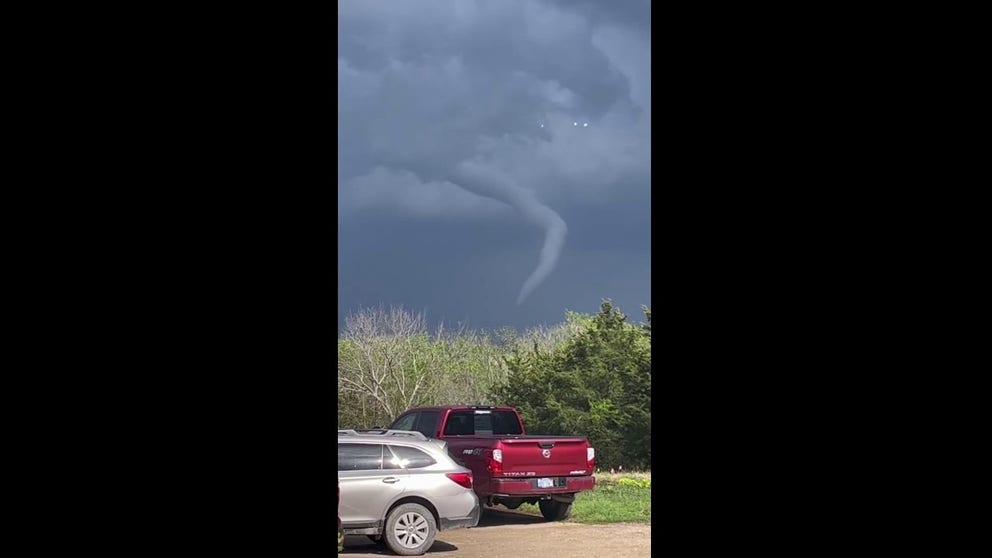
Funnel cloud caught on tape near Westmoreland, Kansas
A funnel cloud threatens Westmoreland, Kansas.
The FOX Forecast Center said Tuesday’s severe weather was caused by a dip in the jet stream that dove over the northern Rockies, allowing for supercell thunderstorms to develop ahead of the cold front that stretched from the eastern Rockies to the Plains and Midwest.
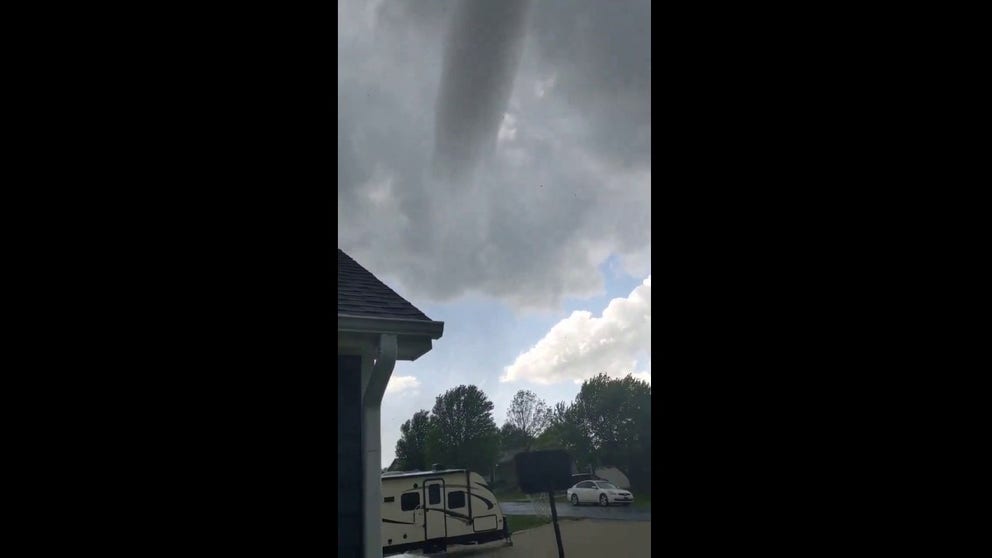
'Its over my house,' Westmoreland homeowner panics seeing confirmed tornado
"It's over my f_______ house," the homeowner yells on the video. She said the funnel was a tornado, on the ground, previously in Westmoreland, Kansas. She was also pelted by debris which presumably prompted her to stop recording.
NOAA’s Storm Prediction Center said it had received more than 150 storm reports , including more than a dozen tornado reports from Iowa to Oklahoma .
- Extreme Weather
- Severe Weather
- Thunderstorms
- South Dakota
12 Travel Garment Bags to Look Good Everywhere
Be wrinkle-free everywhere you go

Every product on this page was chosen by a Harper's BAZAAR editor. We may earn commission on some of the items you choose to buy.
But choosing the best travel garment bag for your needs can be a challenge. There are a lot of options on the market, so we asked an expert about how to find the right one. According to Tumi creative director Victor Sanz, “Your garment bag should be sturdy, functional, and sleek. If you’re frequently traveling by plane, a garment bag that folds to fit carry-on requirements is essential.” He adds, “You want to find the size that will fit all your clothes without having to overfold them and will allow you to reach your destination in style.”

Best Quilted Garment Bag
Mz wallace michael garment bag.
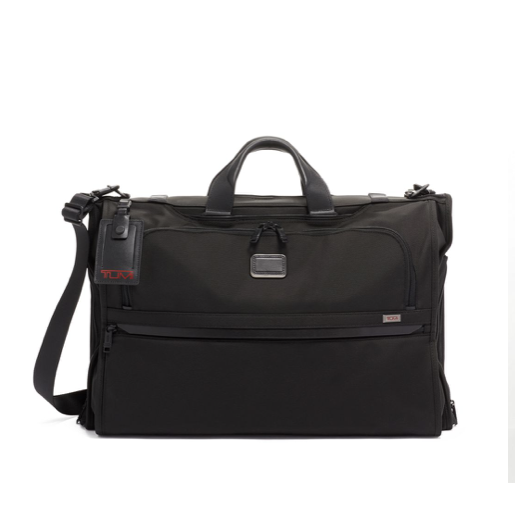
Best Luxury Garment Bag
Tumi alpha garment bag trifold carry-on.
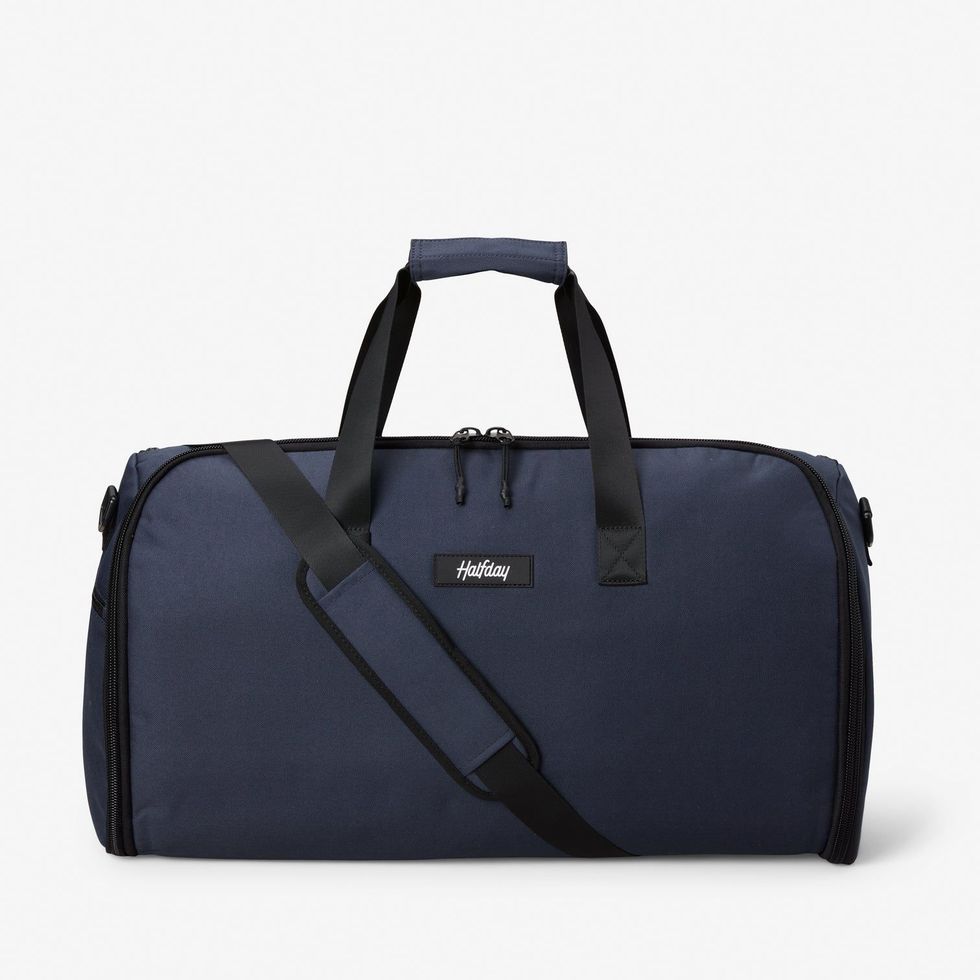
Best Garment Duffel
Halfday the garment duffel.
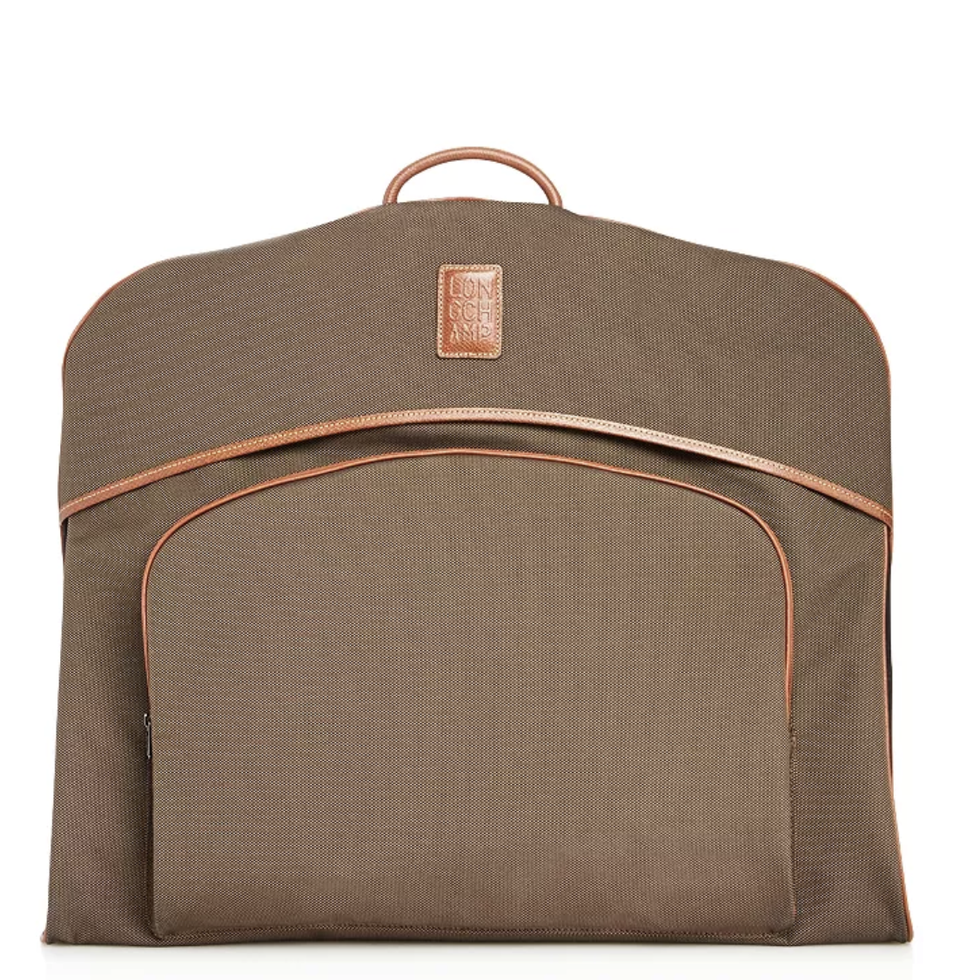
Best Timeless Garment Bag
Longchamp boxford garment bag.
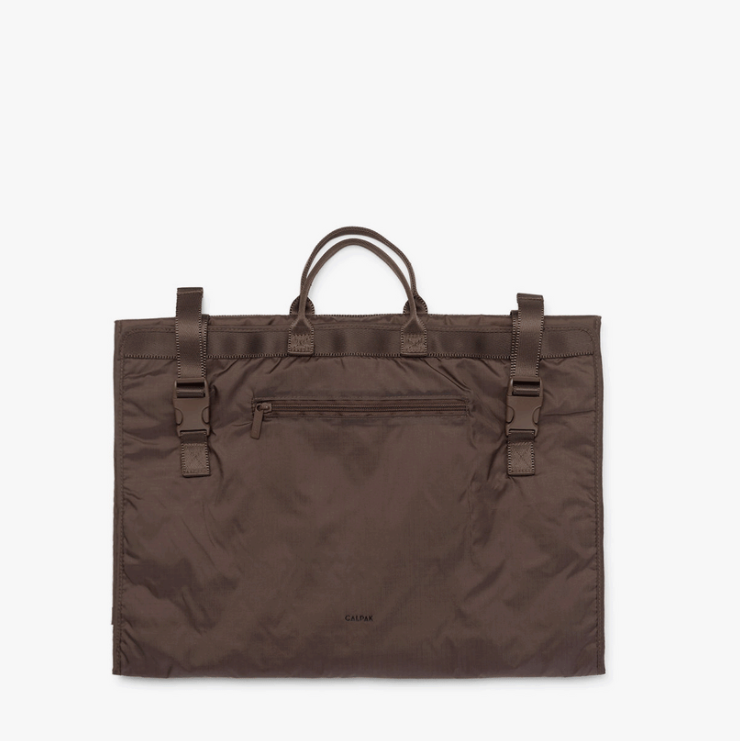
Best Packable Garment Bag
Calpak packable garment bag.
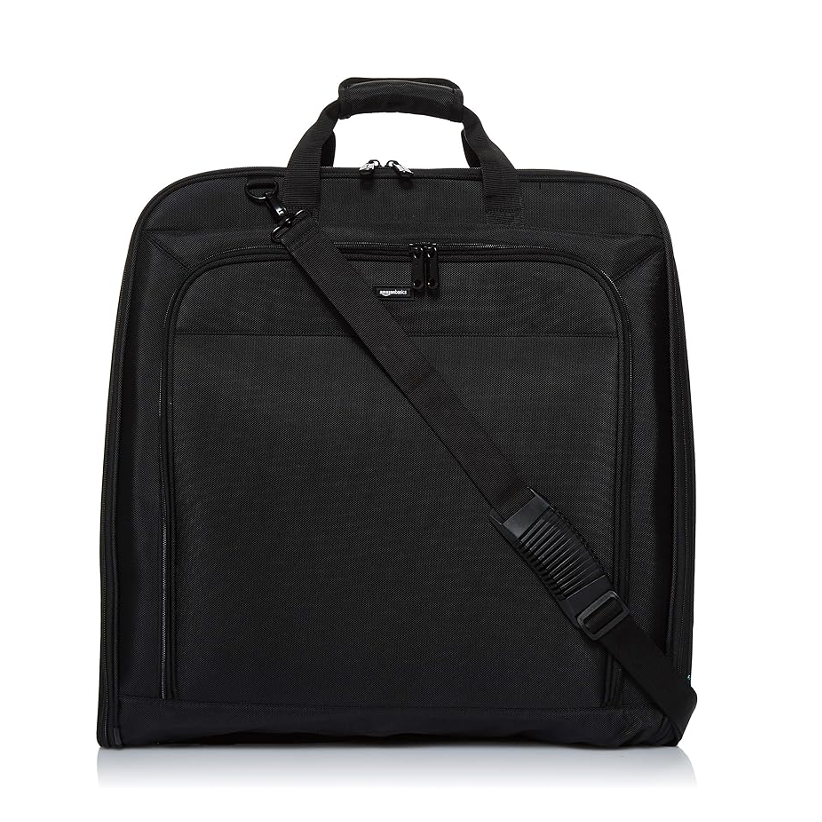
Best Affordable Garment Bag
Amazon basics premium garment bag.
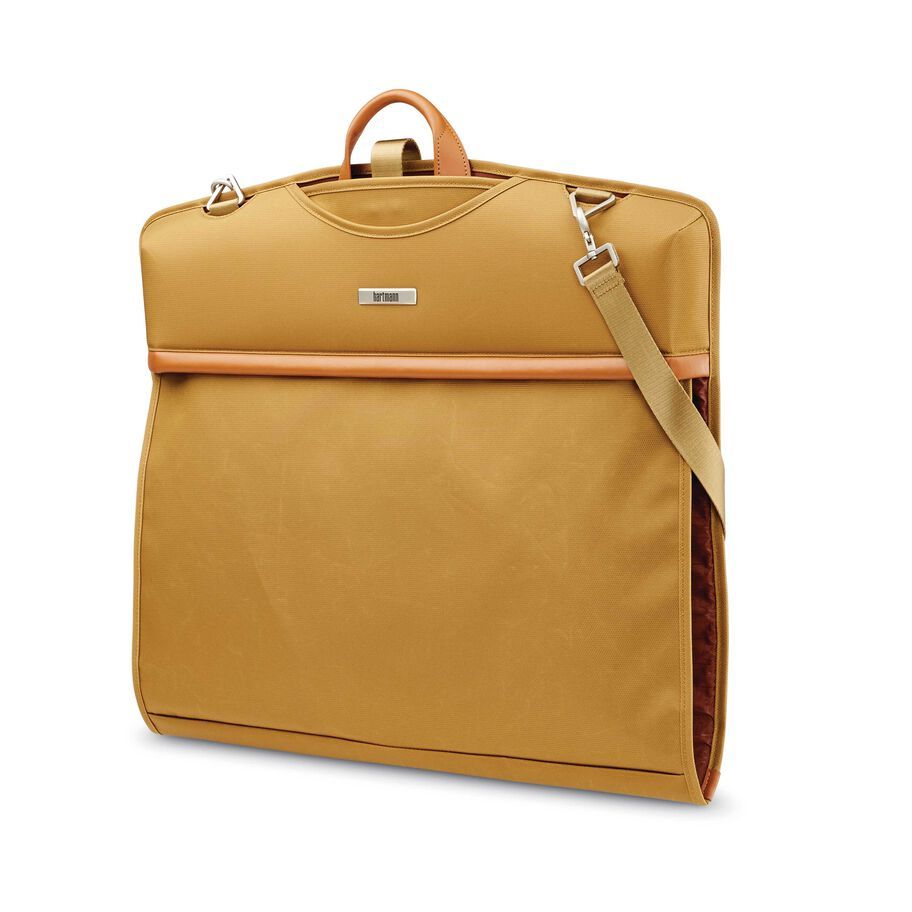
Best Durable Garment Bag
Hartmann metropolitan two-garment sleeve.

Best Personalized Garment Bag
Mark & graham commuter 2-in-1 garment bag.

Best Expandable Garment Bag
Samsonite ascella 3.0 softside expandable luggage.

Best Water-Resistant Garment Bag
Stitch ultimate garment bag.
It’s also important to consider bonus features, like pockets and organizational compartments, and, as Sanz notes, “A crucial function is to ensure that you’re able to hang your garment bag when you arrive at your destination, so that you can prepare your outfits as easily as possible and to ensure that all your clothes are crisp.” Keeping all this in mind, we found the 12 best travel garment bags out there today. Once you start using one of these, you’re never going to go back.
MZ Wallace’s signature quilting isn’t limited to the brand’s totes, appearing here in garment bag form. The thin design is extremely lightweight, ideal for quick trips when you need to bring one to three outfits. There is even an exterior pocket for bonus storage.
Dimensions: 22" × 3" × 39"
Materials: Oxford, leather
What reviewers are saying: “I have been interested in a MZ Wallace garment bag for a while. It is perfect! Just right proportions and size. Thoughtful design and construction details.”
Tumi always delivers premium luggage that will last you over a decade, and this garment bag is no exception. Sanz says: “It’s foldable, with a sturdy handle for easy carrying, making it convenient and compact for every type of travel. I also love that it has several zipper pockets, so I can pack my toiletries and other travel essentials all in one bag. When I arrive at my destination, I hang it in the closet and I know that I will be ready to go.”
Dimensions: 15" x 22" x 6"
Materials: Ballistic nylon
What reviewers are saying: “This bag stores so much for a carry on. I was able to comfortably fit 2 suits and more for a destination wedding!”
This duffel has been receiving high praise ever since its release. A few of the reasons it’s so popular: The duffel is carry-on friendly, water-resistant, and has interior and exterior pockets. And those are only a few of its distinguishing features. Choose an original or compact size for the style that suits your needs.
Dimensions: 22" x 12" x 12"
Materials: Polyester
What reviewers are saying: “The Garment Duffel is a great purchase, especially for anyone in an industry that takes short frequent trips. I was actually able fit quite a bit more clothes than I had anticipated. Took the bag to work and my company bought 20 of them to give to customers. Great purchase.”
Longchamp’s iconic nylon and leather trim takes on a garment bag silhouette. The two-tone design exudes sophistication, with practical touches like a top carry handle, built-in hanger, and front zip pocket.
Dimensions: 23.25" x 41.25"
Materials: Nylon, leather
What reviewers are saying: “I bought this as a gift for my boyfriend who travels a lot and needed a nice garment bag particularly for his suits. This bag is perfect! It fits his suit as well as a few extra shirts. The fabric is an amazing, durable quality, and the leather details make this product look incredible.”
This garment bag is actually designed to fit inside of your carry-on, rather than serving as a stand-alone piece. The water-resistant exterior protects against spills, and exterior zip pockets hold small accessories. It gets the job done, while taking up the least possible amount of space.
Dimensions: 40" x 19"
What reviewers are saying: “I use this bag when I need to workout at work. I go from a suit to athleticwear in minutes.”
Looking for an affordable option that is available ASAP? Amazon’s garment bag holds up to three suits or dresses and boasts multiple zipper compartments.
Dimensions: 40" x 4" x 20.5"
What reviewers are saying: “I bought this bag in 2019 and it has held up incredibly well since then, performs all functions advertised at a great price value. I have taken it on many flights, buses and train rides and have never had an issue with fitting it in the overhead bin on both longer-haul flights and short budget-airline carriers.”
Hartmann’s garment bag adds contemporary touches to an otherwise traditional design. The result? A chic, useful travel accessory that will stand the test of time. The padded shoulder strap and multiple interior pockets enhance the convenience of this style.
Materials: Nylon
What reviewers are saying: “Hartmann was an anniversary gift from my work place, and I am still proud to own it 35 years later.”
Mark & Graham Commuter 2-in-1 Garment Bag
Another convertible duffel, but this time with a personalized touch. That’s right—Mark & Graham lets you monogram your duffel. With a plethora of zippered and snap interior and exterior pockets, this bag gets creative with its storage solutions.
Dimensions: 22" x 10" x 10"
This spinner-style garment bag makes navigating a chaotic airport easy. The ergonomic design has expandable capabilities, as well as various compartments, a hanger bracket, and a pocket for liquids.
Dimensions: 20.5" x 24" x 9.5"
What reviewers are saying: “It’s easy to maneuver and overall great quality and very neat design (many compartments and zippered areas).”
For golfers and non-golfers alike, Stitch makes a duffel that is water- and stain-resistant, and includes a hanger hook, shoulder strap, elastic shoe pockets, and webbed handles. You can even get it customized with your initials.
Dimensions: 22.5" x 11.5" x 12"
What reviewers are saying: “Love it! Fits into the airplane overhead bin, no trouble bringing it along as a carry-on bag. Very sturdy, zippers are tough enough. Shoulder strap is removable. My suit arrived in top shape using this garment bag. Highly recommended.”
Ralph Lauren Leather-Trim Hybrid Garment Duffel
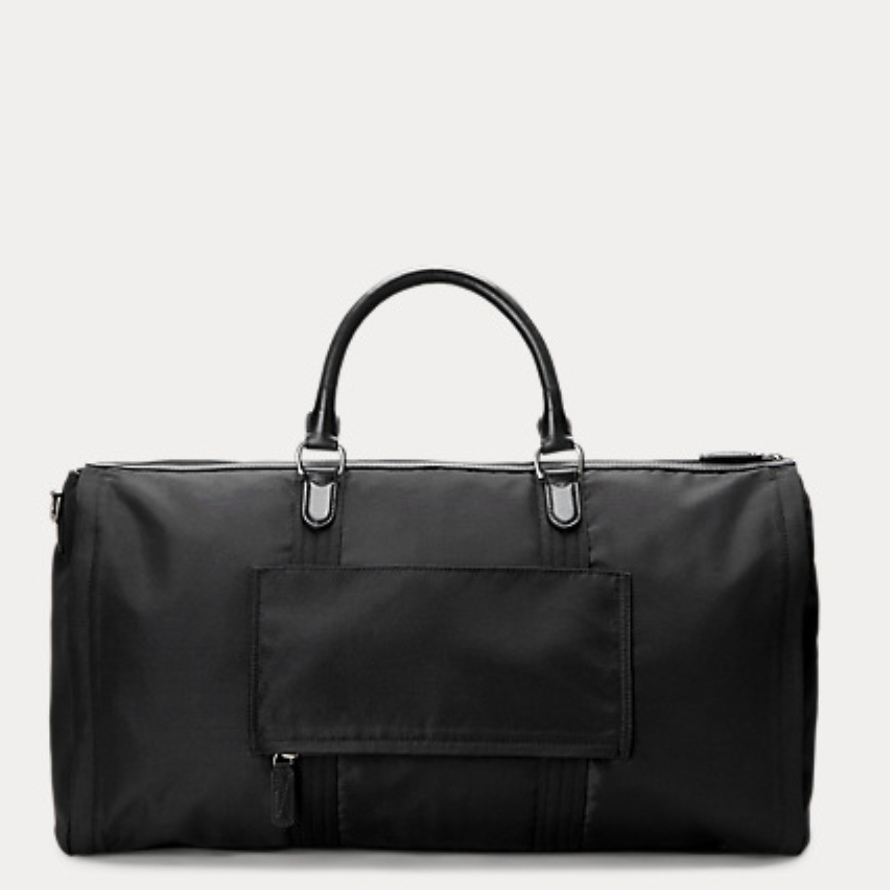
Ralph Lauren’s duffel design is the epitome of understated elegance. An accompanying shoulder strap makes it easy to carry around.
Dimensions: 15" x 21.5" x 9"
Materials: Polyester, leather
Gucci Savoy Garment Bag
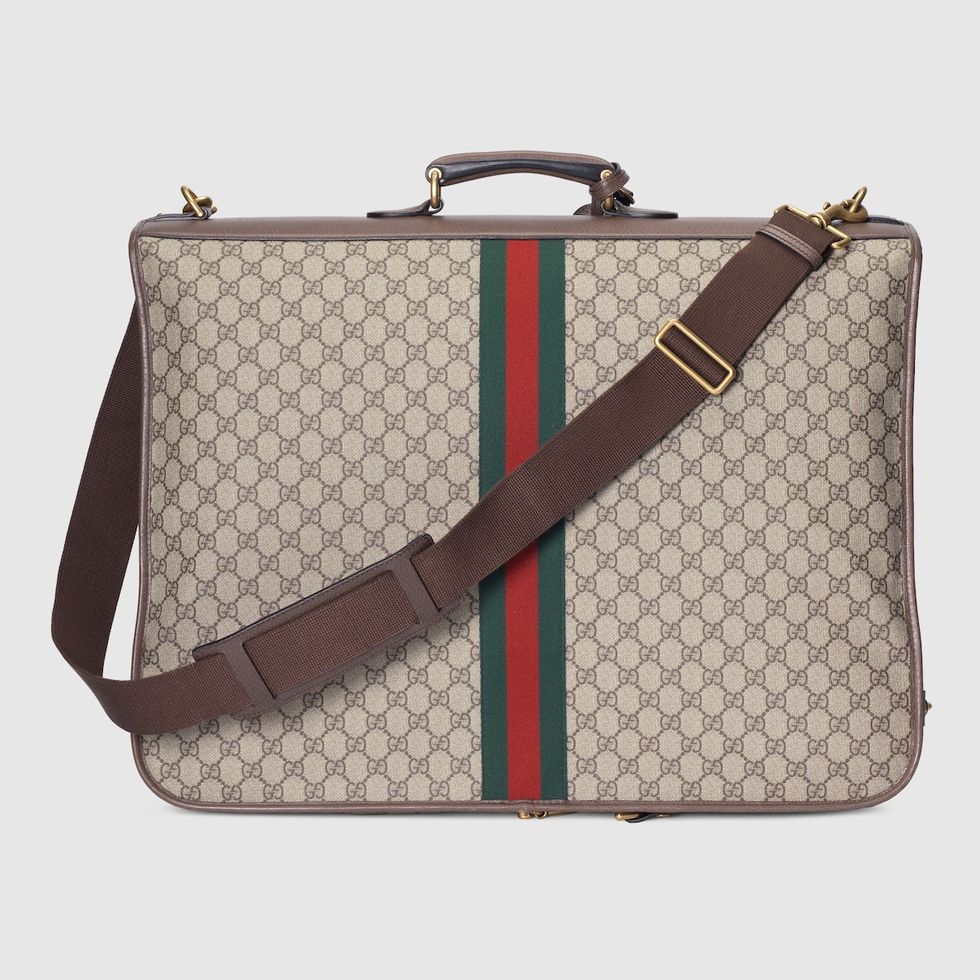
Embrace the bold luxury aesthetic with a Gucci bag covered in the house’s monogram. Containing a big compartment with a hanger and two zip pockets, this garment bag will hold all your essentials.
Dimensions: 21.5" x 16.1" x 6.7"
Materials: Canvas, leather, cotton
.css-p3fpzg{font-family:NewParisTextBook,NewParisTextBook-roboto,NewParisTextBook-local,Georgia,Times,Serif;font-weight:normal;letter-spacing:-0.015rem;margin-bottom:0.625rem;margin-top:0.625rem;}@media(max-width: 48rem){.css-p3fpzg{font-size:2.25rem;line-height:1.1;}}@media(min-width: 48rem){.css-p3fpzg{font-size:2rem;line-height:1.1;}}@media(min-width: 64rem){.css-p3fpzg{font-size:2.625rem;line-height:1.1;}}.css-p3fpzg b,.css-p3fpzg strong{font-family:inherit;font-weight:bold;}.css-p3fpzg em,.css-p3fpzg i{font-style:normal;font-family:NewParisTextItalic,NewParisTextItalic-roboto,NewParisTextItalic-local,Georgia,Times,Serif;} Why trust Harper’s Bazaar ?

For more than 150 years, Harper’s Bazaar has been the preeminent fashion, beauty, and lifestyle resource for women at every age. We cover what’s new and what’s next in fashion by working with the world’s leading authorities in ready-to-wear, footwear, accessories, and more. Every story we publish has been thoroughly researched and vetted by our team of editors and industry experts.
Gaby Keiderling is a freelance writer, working on fashion, lifestyle, travel, and sports features.
The Edit: Fashion
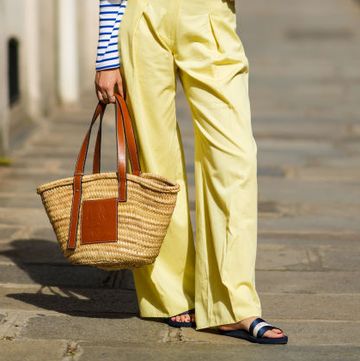
20 Comfortable Clogs to Wear Everywhere

The 15 Best Crossbody Bags for Travel

15 Best Summer Sneakers You Can Wear All Day
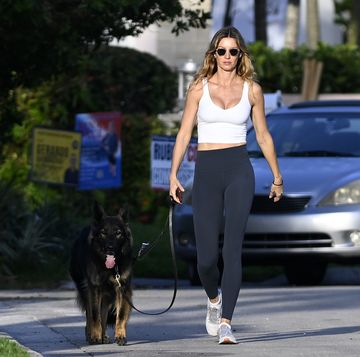
Shop Gisele Bündchen–Approved Walking Sneakers
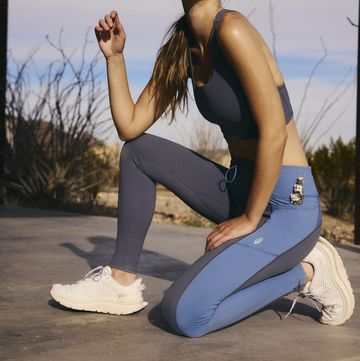
9 Best Hoka Shoes for Walking

27 Excellent T-Shirts You Won’t Want to Take Off
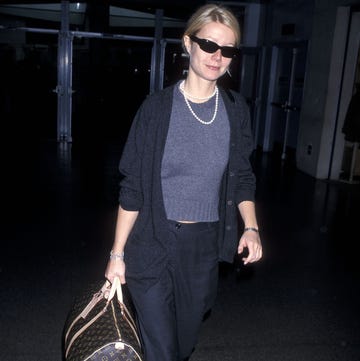
12 Travel Pants for Women on Long Flights
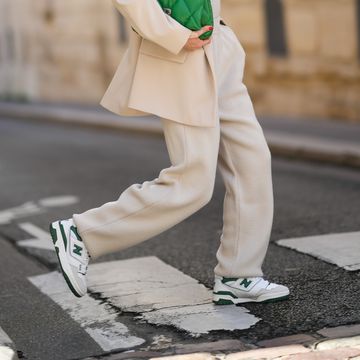
24 Spring Sneakers to Shop for 2024

15 Lightweight Pants for Effortless Summer Outfits
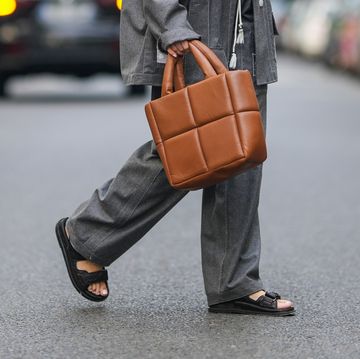
Sandals That Feel as Breezy as Linen Pants

The 10 Best New Balance Shoes

IMAGES
VIDEO
COMMENTS
One of the main types of water transport is a boat. This is the most likely form of vehicle you would use to travel on water, regardless of whether you're on a canal or in the middle of the ocean. However, there are of course a lot of different types of boats. We can generally split boats into three categories: Unpowered or human-powered boats.
Water transportation is the international movement of water over large distances. Methods of transportation fall into three categories: Aqueducts, which include pipelines, canals, tunnels and bridges; Container shipment, which includes transport by tank truck, tank car, and tank ship.; Towing, where a tugboat is used to pull an iceberg or a large water bag along behind it.
Water transport is a huge part of tourism and travel. Otherwise known as maritime transport, fluvial transport or waterborne transport, it refers to the transportation of people or cargo via waterways. The term ' water transport' can also be used to describe the intentional movement of water itself over long distances.
Types Of Water Transport. There are mainly three modes of transportation: airways, waterways and land routes. While land transportation includes everything from cars to buses, trucks to scooters, and bikes to railways, air transportation is mainly comprised of planes and choppers. Speaking of water transportation, the only picture that emerges ...
From the 14-1500s, water transport was key in what is known as the general Age of Discovery. This was Christopher Columbus' era, when European ships sailed across the world searching for new trading routes. Other big names in maritime history around this time include John Cabot, Juan Fernandez, Jacques Cartier, Richard Hakluyt and Vasco da Gama.
The water cycle is the endless process that connects all of that water. It joins Earth's oceans, land, and atmosphere. Earth's water cycle began about 3.8 billion years ago when rain fell on a cooling Earth, forming the oceans. The rain came from water vapor that escaped the magma in Earth's molten core into the atmosphere.
Water transport has several social and transportational advantages. According to Bowles, et al., "It is the laminar quality of water that makes various mobilities possible - but it also creates frictions, immobilities, and moorings … complicating the boundaries between moving and staying, scarcity and abundance, 'nature' and 'culture'" (Bowles et al., 2019: 5-6).
wave, propagation of disturbances from place to place in a regular and organized way. Most familiar are surface waves that travel on water, but sound, light, and the motion of subatomic particles all exhibit wavelike properties. In the simplest waves, the disturbance oscillates periodically ( see periodic motion) with a fixed frequency and ...
water travel: 1 n travel by water Synonyms: seafaring Types: show 9 types... hide 9 types... ocean trip , voyage an act of traveling by water sailing riding in a sailboat boating , yachting water travel for pleasure cruise , sail an ocean trip taken for pleasure maiden voyage the first voyage of its kind luff the act of sailing close to the ...
The water cycle describes where water is on Earth and how it moves. Water is stored in the atmosphere, on the land surface, and below the ground. It can be a liquid, a solid, or a gas. Liquid water can be fresh or saline (salty). Water moves between the places it is stored. Water moves at large scales, through watersheds, the atmosphere, and ...
These (a)(1) waters include all of the "navigable waters of the United States," defined in 33 C.F.R. Part 329 and by numerous decisions of the federal courts, plus all other waters that are navigable-in-fact (e.g., the Great Salt Lake, UT and Lake Minnetonka, MN). EPA and the Corps are providing this guidance on determining whether a water ...
People can also travel by submarine. Submarines can travel above or under water. Submarines are used by many different types of people. Sometimes they are driven by soldiers or scientists. Soldiers use submarines to monitor the water surrounding different countries. Scientists can use them to study underwater life.
Nautical tourism. Cruisers can see traditional life in remote areas of the world; here, a Kuna local paddles a dugout canoe in the San Blas Islands. Nautical tourism, also called water tourism, is tourism that combines sailing and boating with vacation and holiday activities. It can be travelling from port to port in a cruise ship, or joining ...
Watercraft propulsion can be divided into five categories. Water power is used by drifting with a river current or a tidal stream. An anchor or weight may be lowered to provide enough steerage way to keep in the best part of the current (as in drudging) or paddles or poles might be used to keep position. Human effort is used through a pole ...
Noun. 1. water travel - travel by water. seafaring. travel, traveling, travelling - the act of going from one place to another; "he enjoyed selling but he hated the travel". ocean trip, voyage - an act of traveling by water. sailing - riding in a sailboat. boating, yachting - water travel for pleasure.
The meaning of BOAT is a small vessel for travel on water. How to use boat in a sentence. a small vessel for travel on water; ship; a boat-shaped container, utensil, or device…
Definition of water travel in the Definitions.net dictionary. Meaning of water travel. Information and translations of water travel in the most comprehensive dictionary definitions resource on the web.
The final "Revised Definition of 'Waters of the United States'" rule was published in the Federal Register on January 18, 2023, and took effect on March 20, 2023. On August 29, 2023, the agencies issued a final rule amending the Code of Federal Regulations to conform the January 2023 Rule's definition of "waters of the United States" to the Supreme Court decision in Sackett v.
Water pollutants come from either point sources or dispersed sources. A point source is a pipe or channel, such as those used for discharge from an industrial facility or a city sewerage system.A dispersed (or nonpoint) source is a very broad unconfined area from which a variety of pollutants enter the water body, such as the runoff from an agricultural area.
The Daniel Ball definition specifies that commerce must be conducted in the "customary modes" of trade and travel on water. Because the time of statehood is the point in time being considered (as specified by the Submerged Lands Act) that means that "customary modes" would refer to watercraft that were customarily used in Alaska at the ...
water: [noun] the liquid that descends from the clouds as rain, forms streams, lakes, and seas, and is a major constituent of all living matter and that when pure is an odorless, tasteless, very slightly compressible liquid oxide of hydrogen H2O which appears bluish in thick layers, freezes at 0° C and boils at 100° C, has a maximum density at ...
A torrent of rain on Tuesday flooded parts of Dubai, turned streets into rivers and shut down the world's second-busiest airport for a time. The deluge of water triggered the question: Was this ...
H.Res.1173 - Providing for consideration of the bill (H.R. 615) to prohibit the Secretary of the Interior and the Secretary of Agriculture from prohibiting the use of lead ammunition or tackle on certain Federal land or water under the jurisdiction of the Secretary of the Interior and the Secretary of Agriculture, and for other purposes; providing for consideration of the bill (H.R. 2925) to ...
An amphibious vehicle (or simply amphibian) is a vehicle that is a means of transport viable on land as well as on or under water. Amphibious vehicles include amphibious bicycles, ATVs, cars, buses, trucks, railway vehicles, combat vehicles and hovercraft.. Classic landing craft are not amphibious vehicles as they do not offer any real land transportation at all, although they are part of ...
As any seasoned traveler knows, reusable water bottles are an essential piece of travel gear for just about any trip, be it a backpacking adventure, a week-long cruise or a weekend road trip. Not ...
Dubai International Airport, one of the world's busiest aviation hubs, remained in disarray Thursday after unprecedented heavy rain led to airliners having to negotiate flooded runways.
Water Garden Sigiriya. Livia Hengel. Just a short drive from Sigiriya, a 5 th-century AD royal palace located on top of a towering rock that dominates the skyline, Water Garden Sigiriya is an ...
1 killed, several injured in Kansas after tornado destroys homes during multi-day severe weather threat Flooding was already occurring in portions of Texas, where mandatory evacuations were ordered along the Trinity River in Polk County because rushing water has overflowed its banks.
A chic, useful travel accessory that will stand the test of time. The padded shoulder strap and multiple interior pockets enhance the convenience of this style. Dimensions: 40" x 4" x 20.5"
control system: A control system is a set of mechanical or electronic devices that regulates other devices or systems by way of control loops . Typically, control systems are computerized.